Welcome to the comprehensive guide on how to clean and prepare a whole beef tenderloin. As a personal chef, my experience has shown that a perfectly roasted beef tenderloin is a crowd-pleaser at any gathering. Today, I’ll share with you the essential steps to transform a whole tenderloin into a culinary masterpiece.
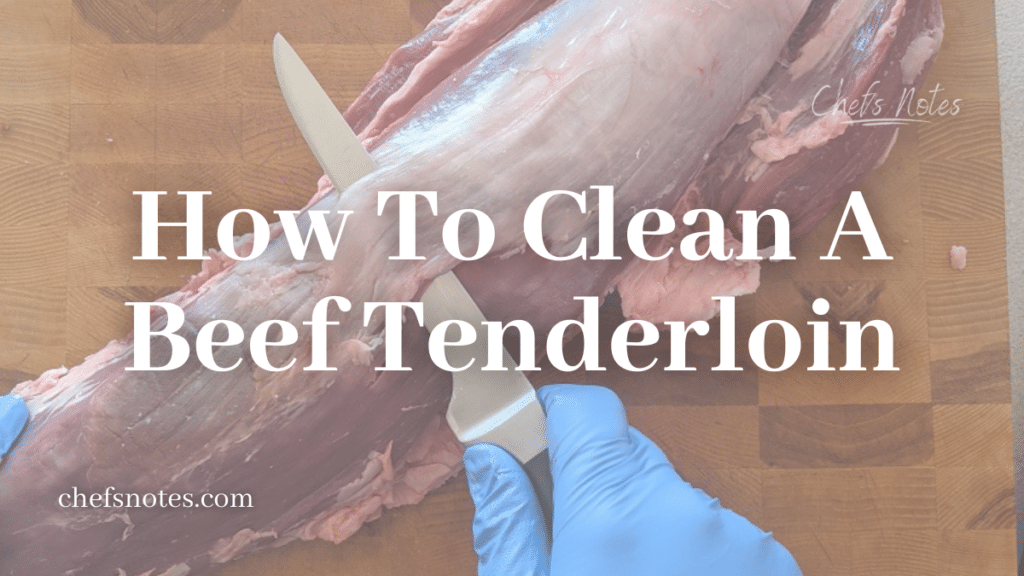
Cleaning the Tenderloin
Begin by removing your whole beef tenderloin from its vacuum-sealed packaging. Expect some blood within the package; this is normal. Carefully line a baking sheet with paper towels, place the tenderloin on top, and pat it dry. Ensure to cut the packaging carefully, avoiding any accidental nicks in the meat.
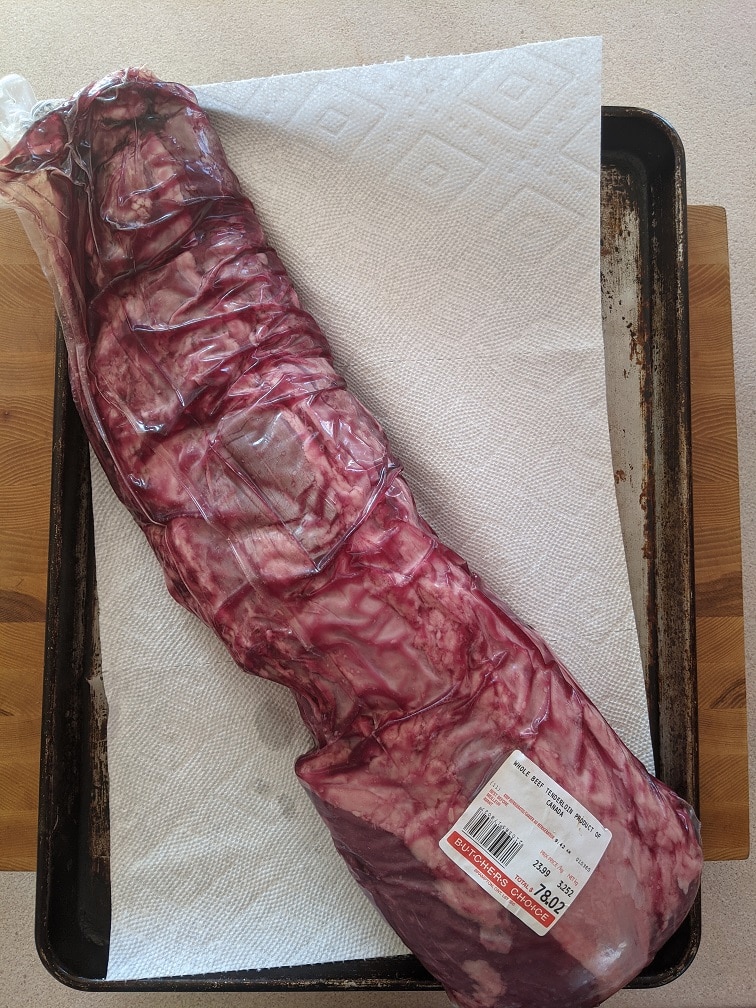
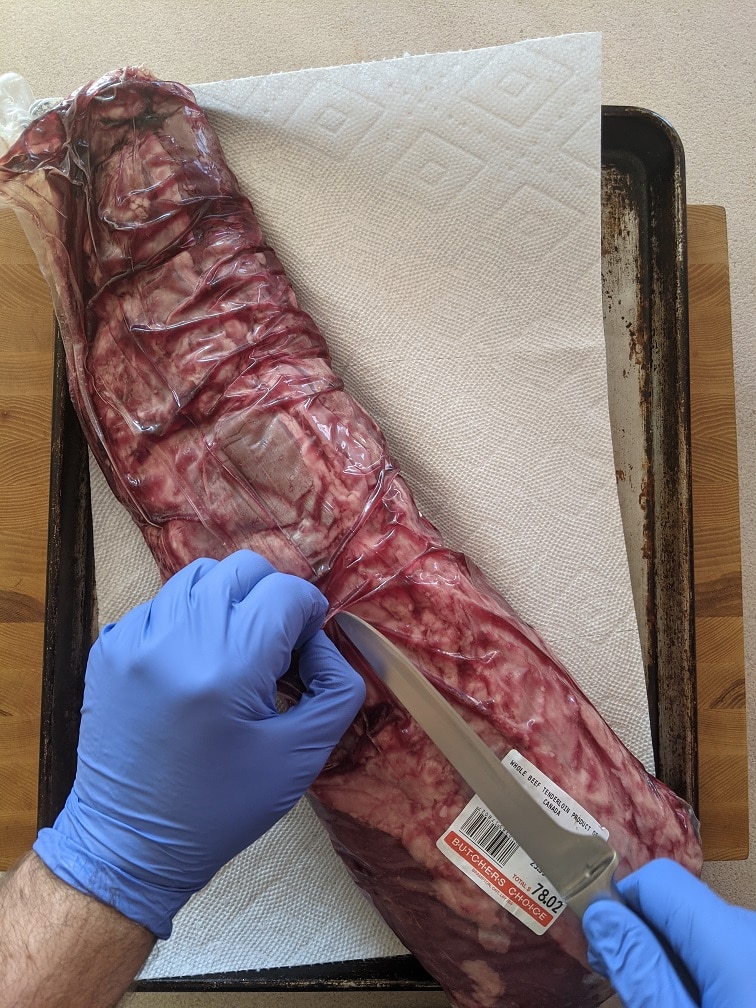
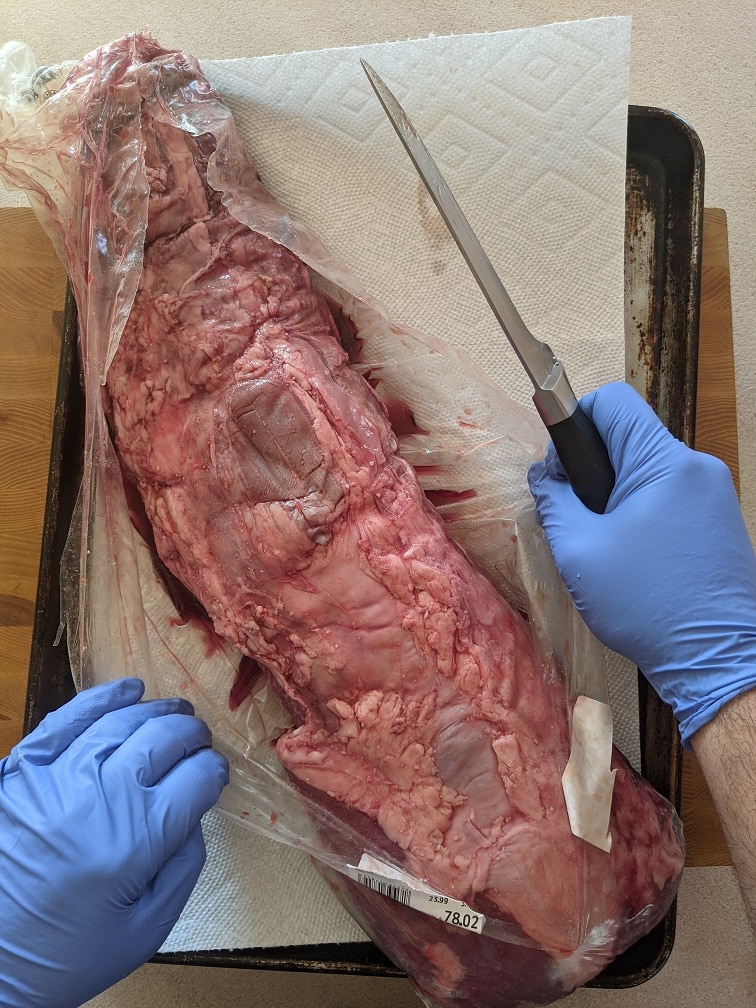
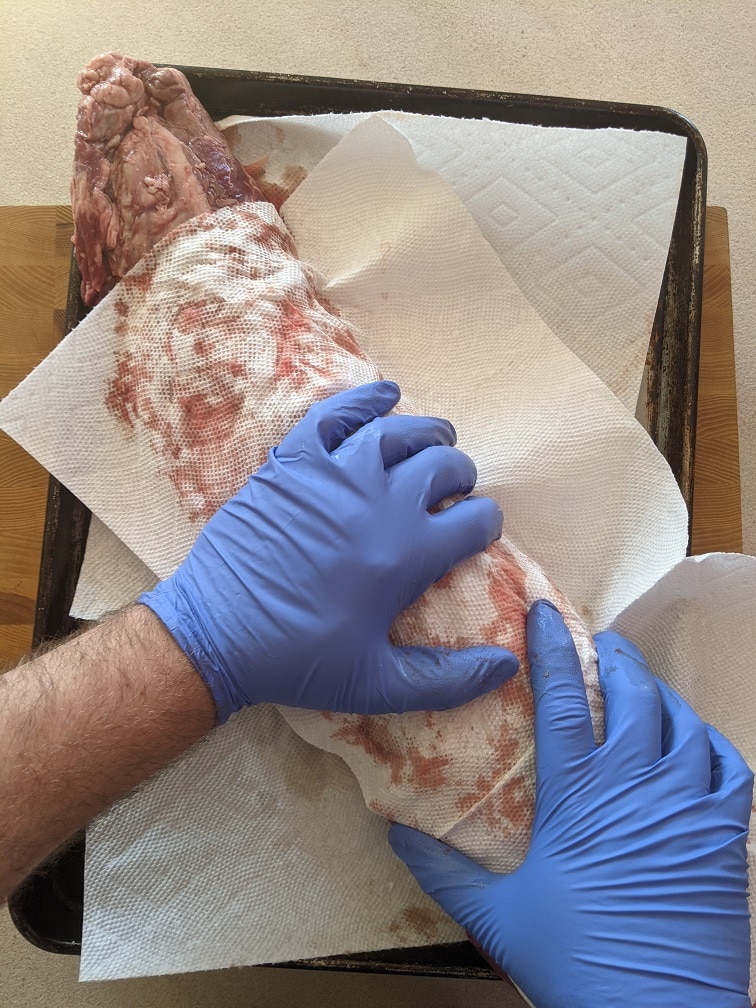
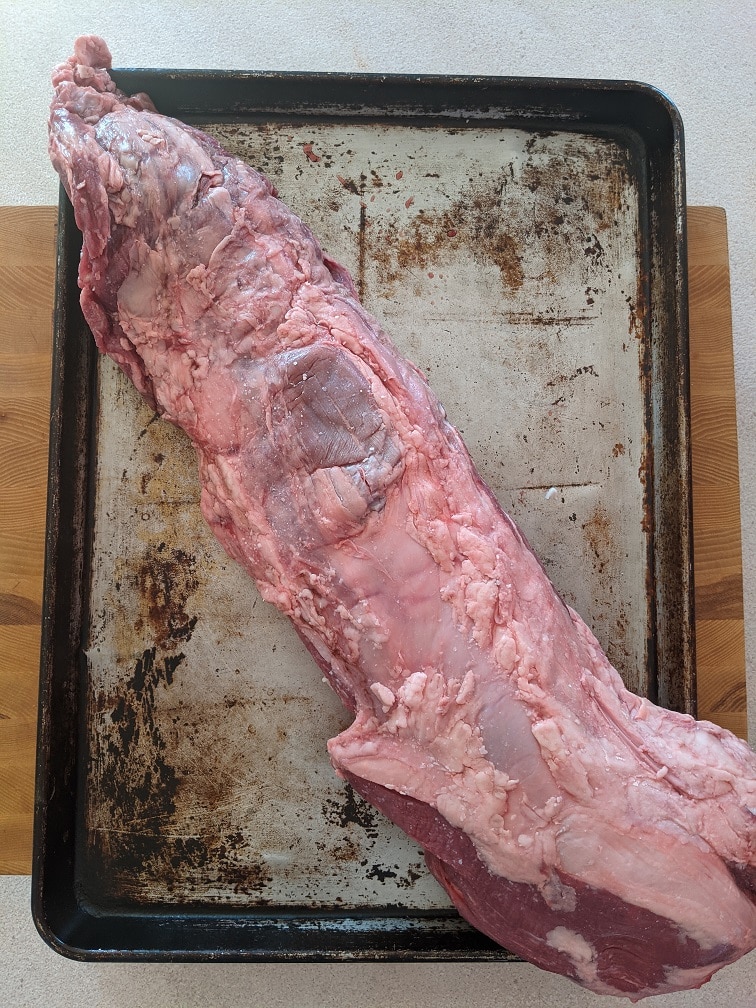
Removing Excess Fat and Sinew
The key to a tender and flavorful beef tenderloin lies in removing the excess fat, sinew, and connective tissue. Pay particular attention to the ‘chain’, a strip of meat and fat running along the side of the tenderloin. While not suitable for direct consumption, it’s excellent for broths or can be trimmed further for skewers.
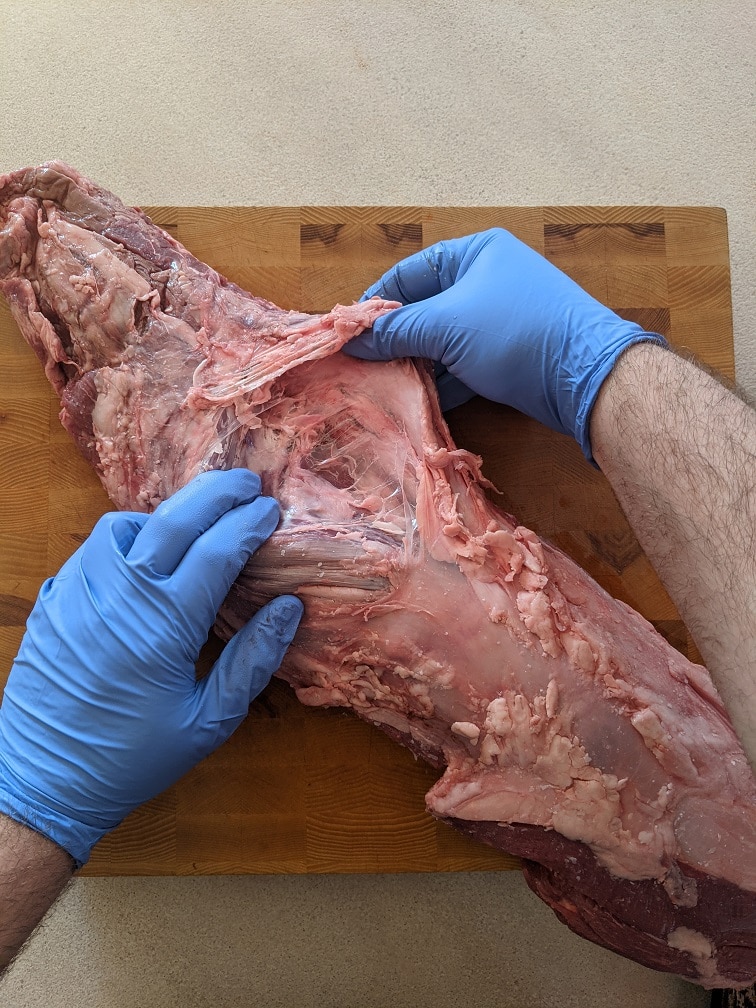
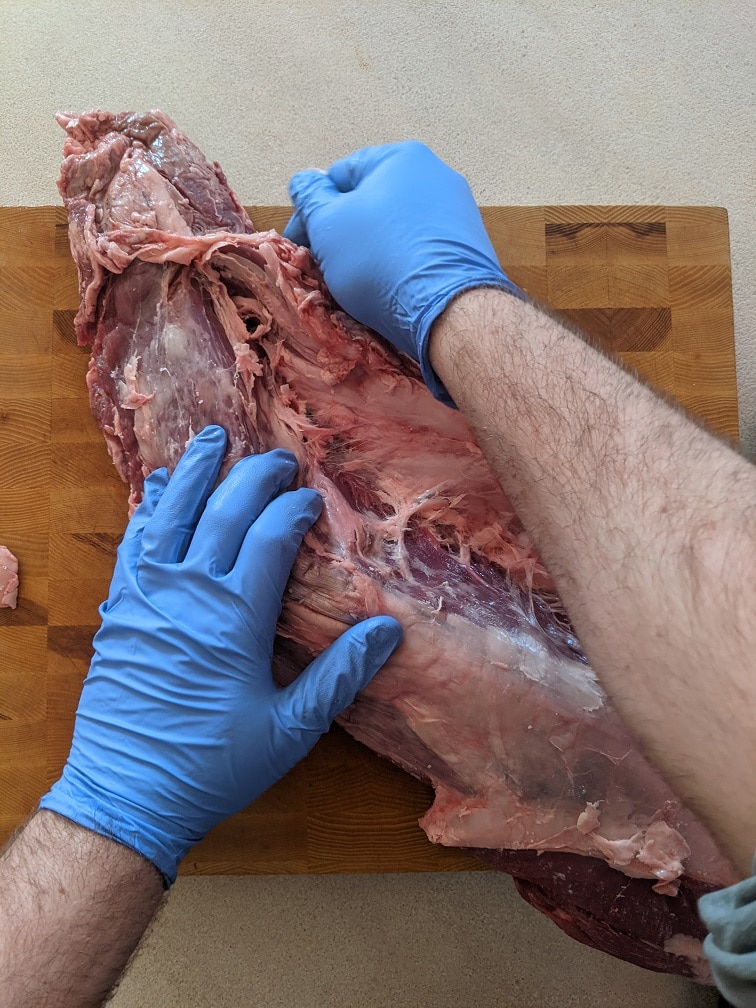
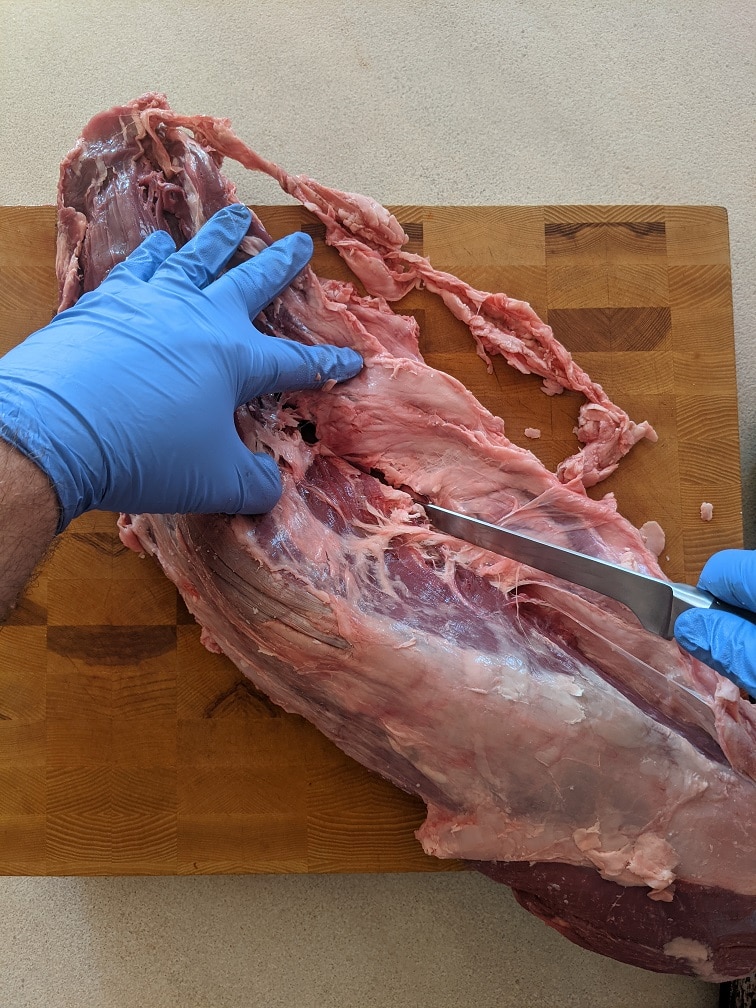
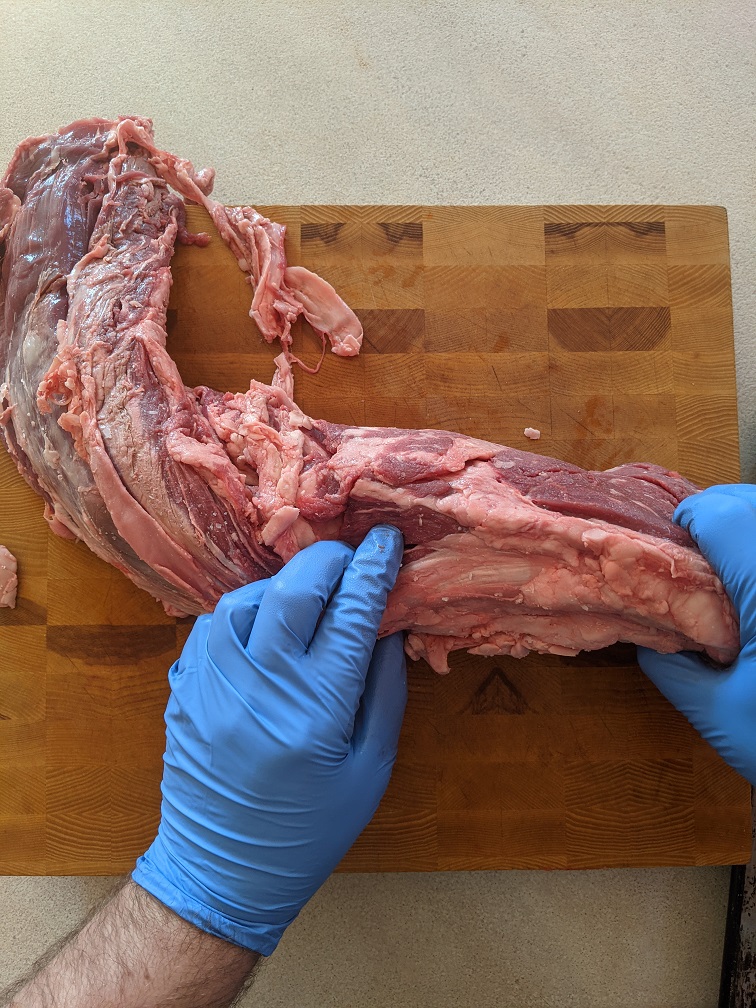
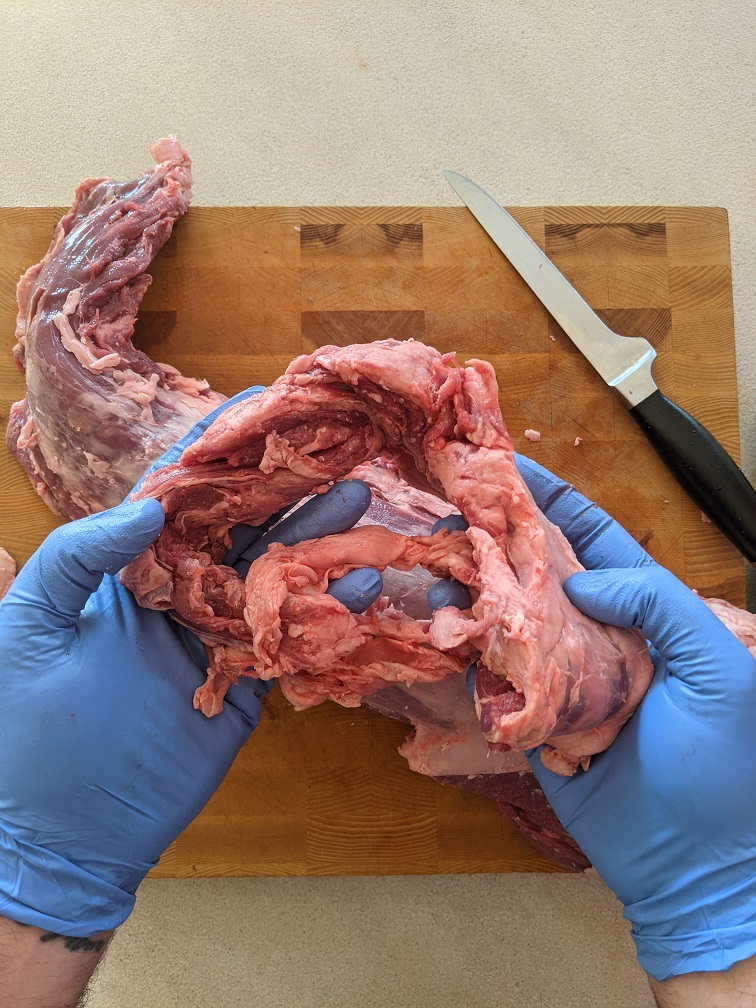
Eliminating Silver Skin
Silver skin is a tough connective membrane that doesn’t soften upon cooking, making it necessary to remove. Using a boning or fillet knife, gently slide the blade under the silver skin and strip it away in thin layers. While this process may result in a slight loss of meat, it’s crucial for ensuring the tenderness of your dish.
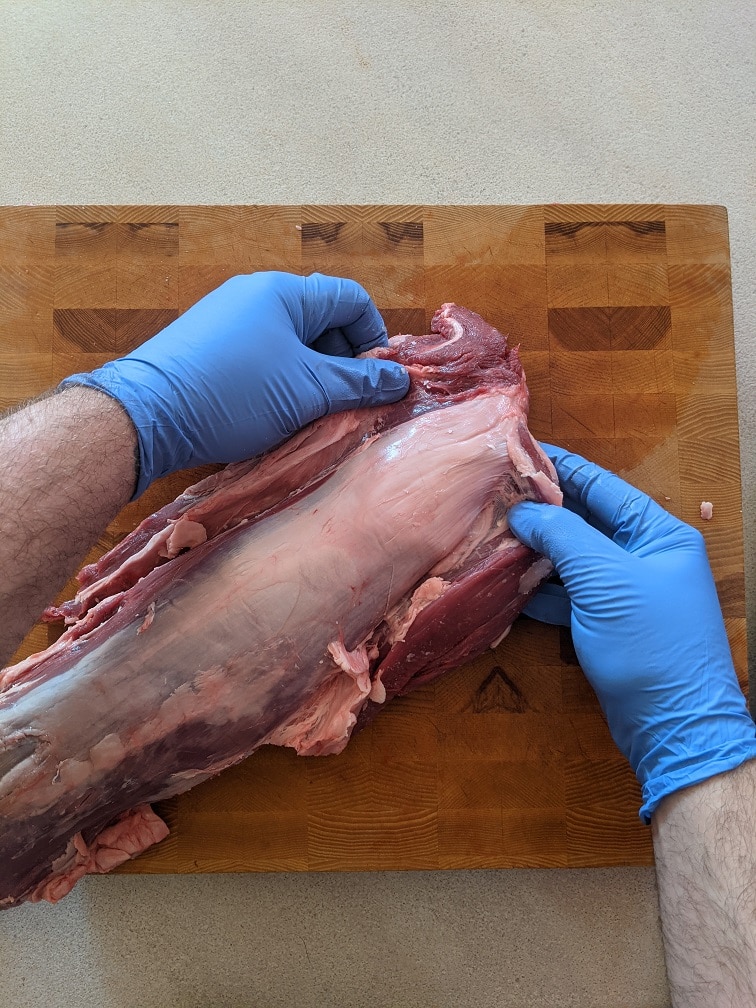
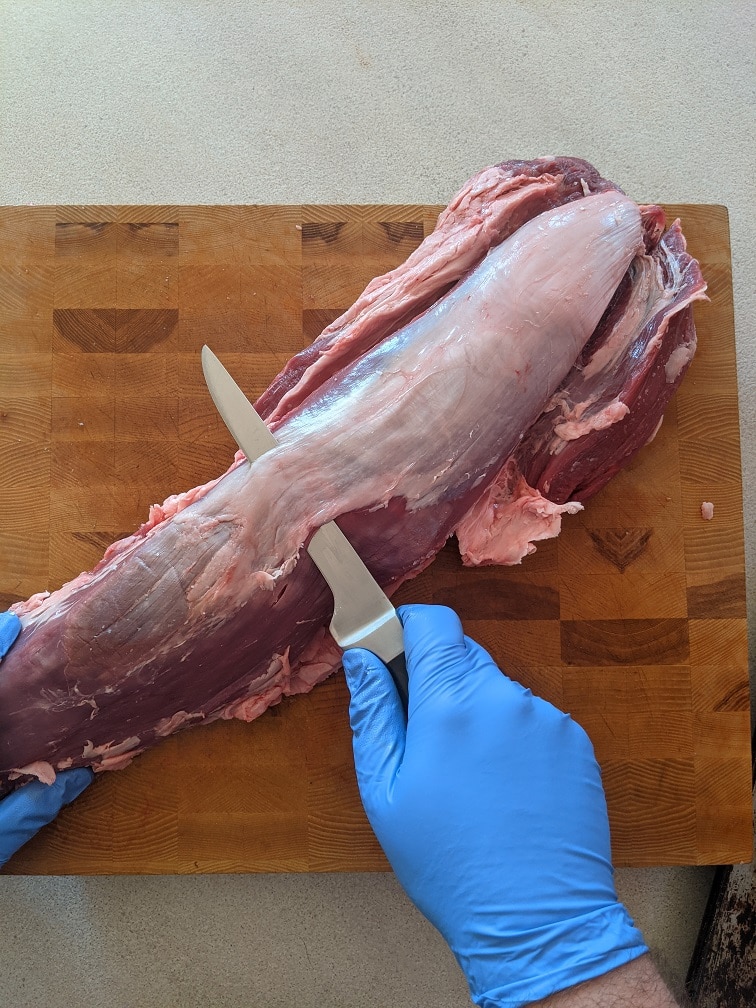
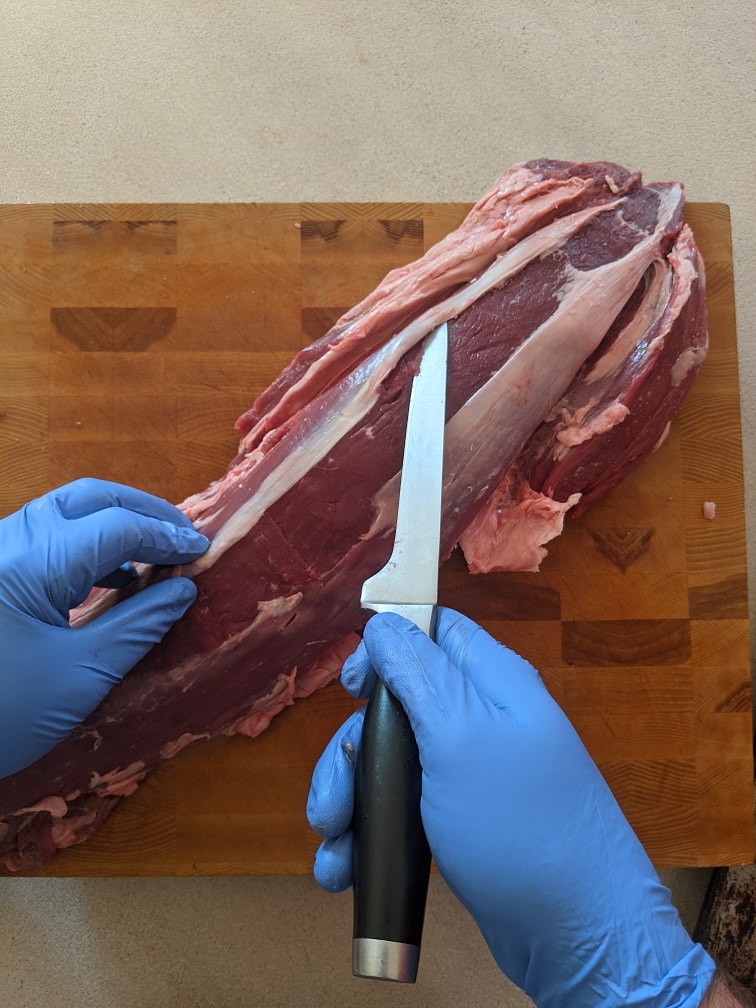
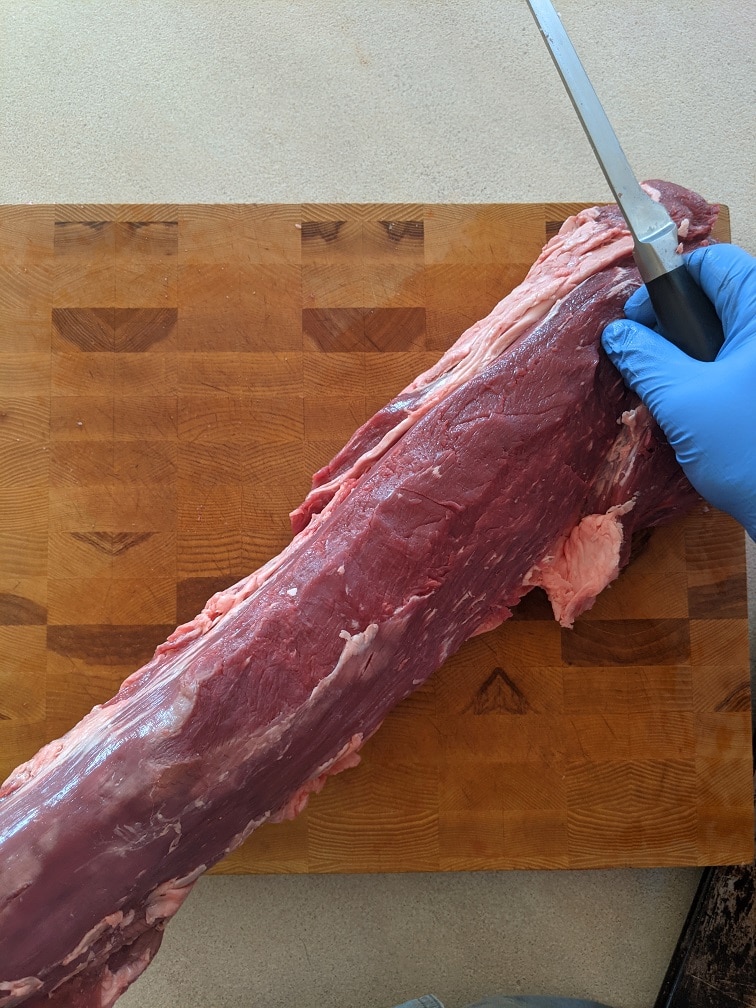
Flip the tenderloin
Once the silver skin is cut away, flip the tenderloin over. On the underside of the tenderloin, there’s going to some flaps of meat and fat. This is where the tenderloin is connected to the skeletal structure of the animal. This needs to be cleaned up too. All you can really do is cut it all away. Keep your knife as flat as possible and make long, smooth slices until the flaps are removed. The flaps can be used to make skewers or broth, so they aren’t going to waste.
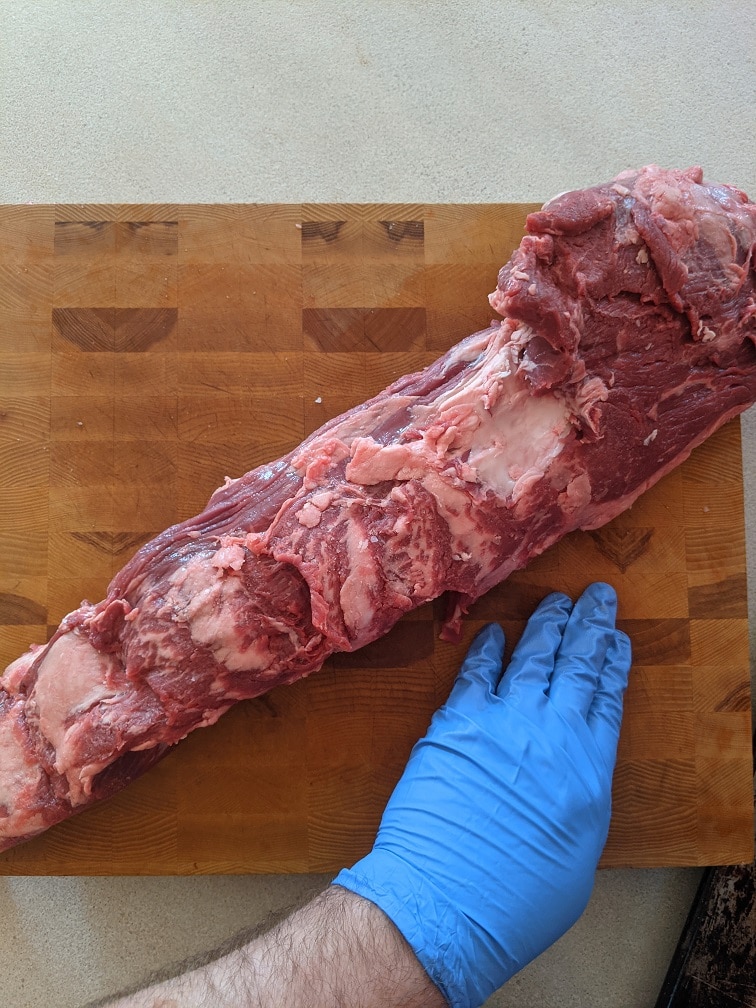
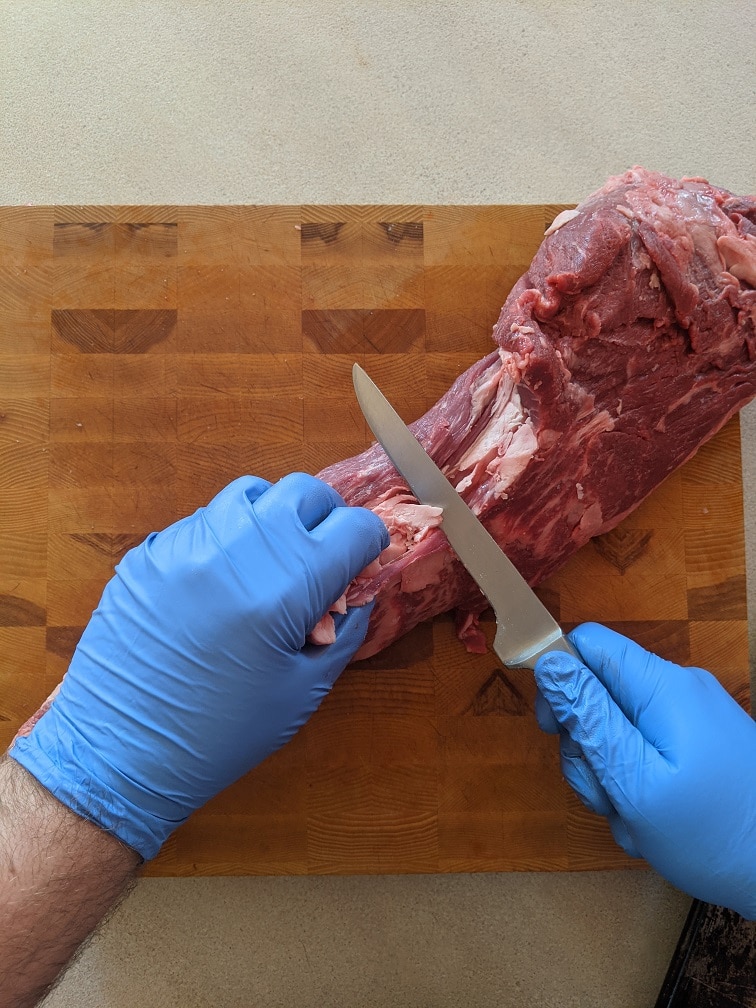
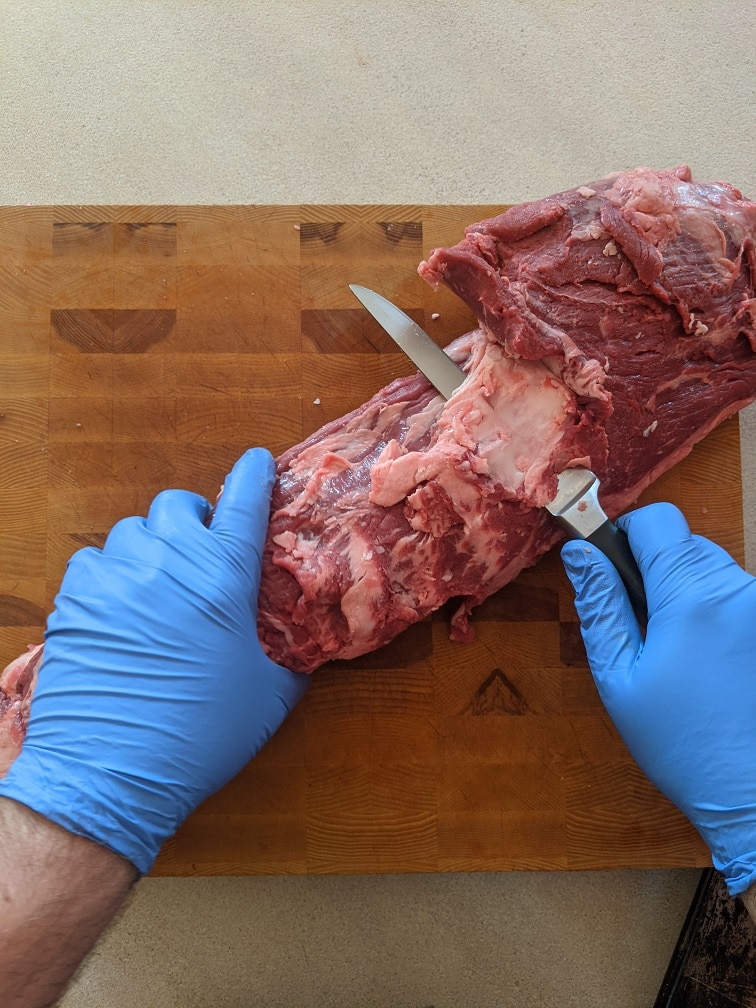
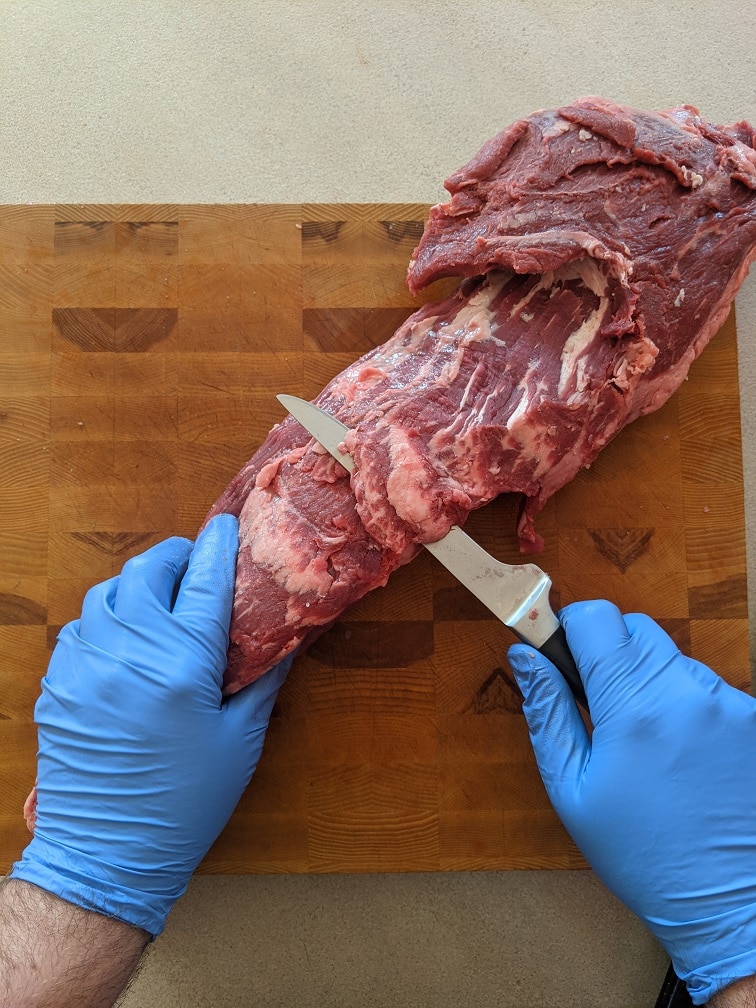
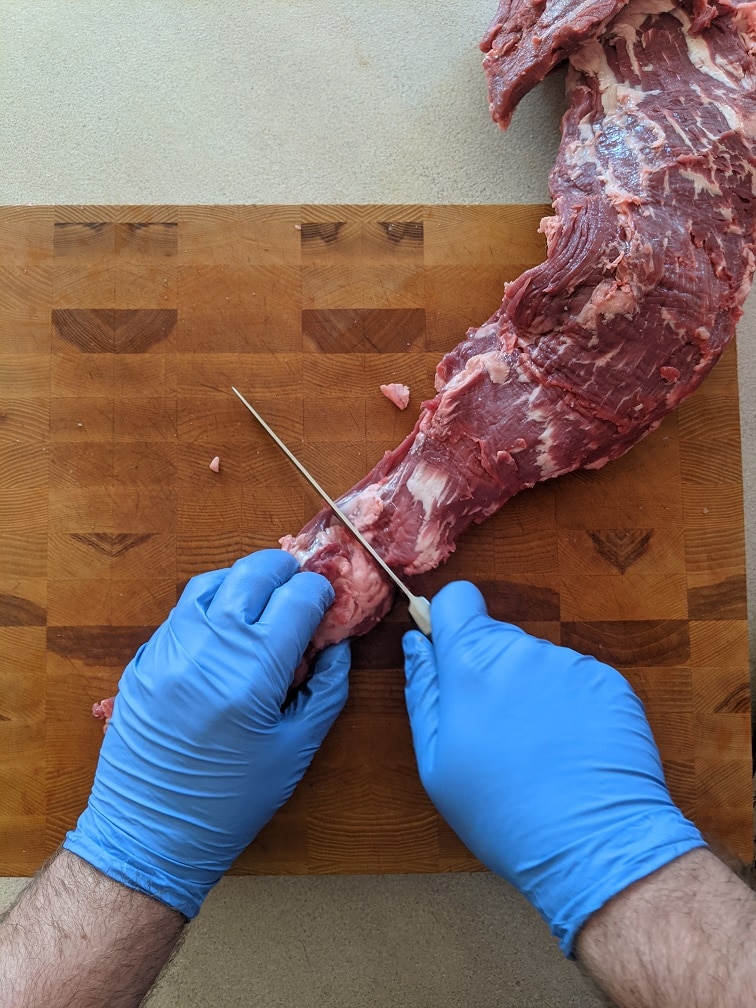
What to do with the extra pieces
At one end of the beef tenderloin, there are two extra pieces of meat. These can be left on, but in the interest of even cooking, it’s better to take them off, but of course, they aren’t going to go to waste. To cut the pieces away, use your knife and make long, smooth slices down the outside edge of the tenderloin. The separation between the tenderloin and the other meat pieces will be more obvious with the smaller piece than the bigger piece, but it shouldn’t be too difficult either way. What you should have once those pieces are cutaway is a fully cleaned beef tenderloin.
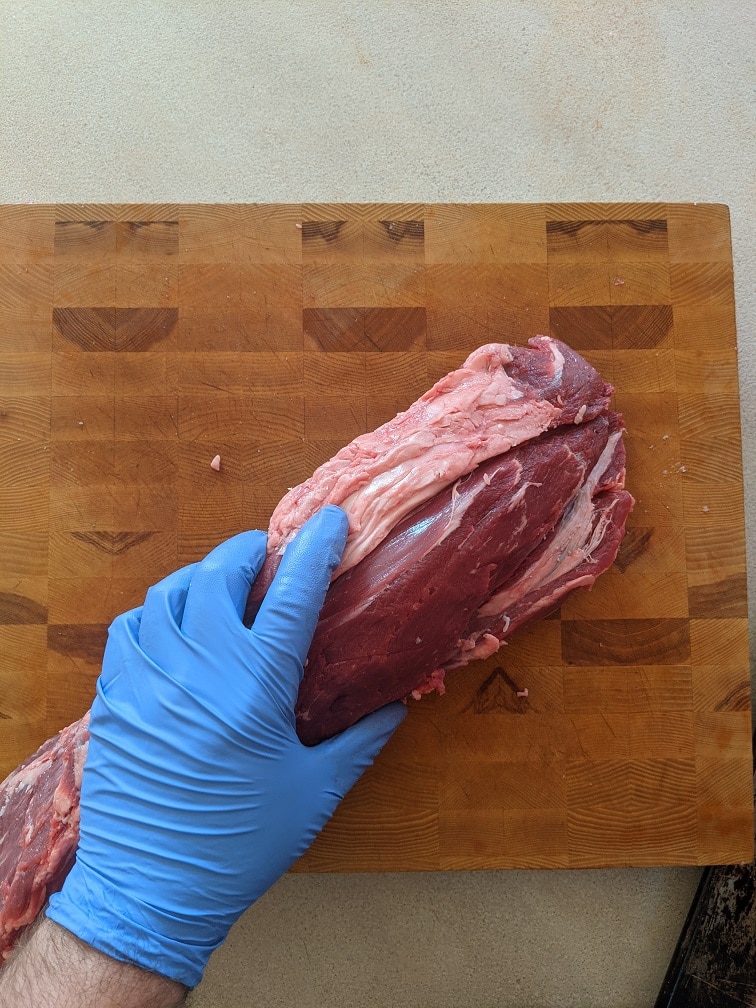
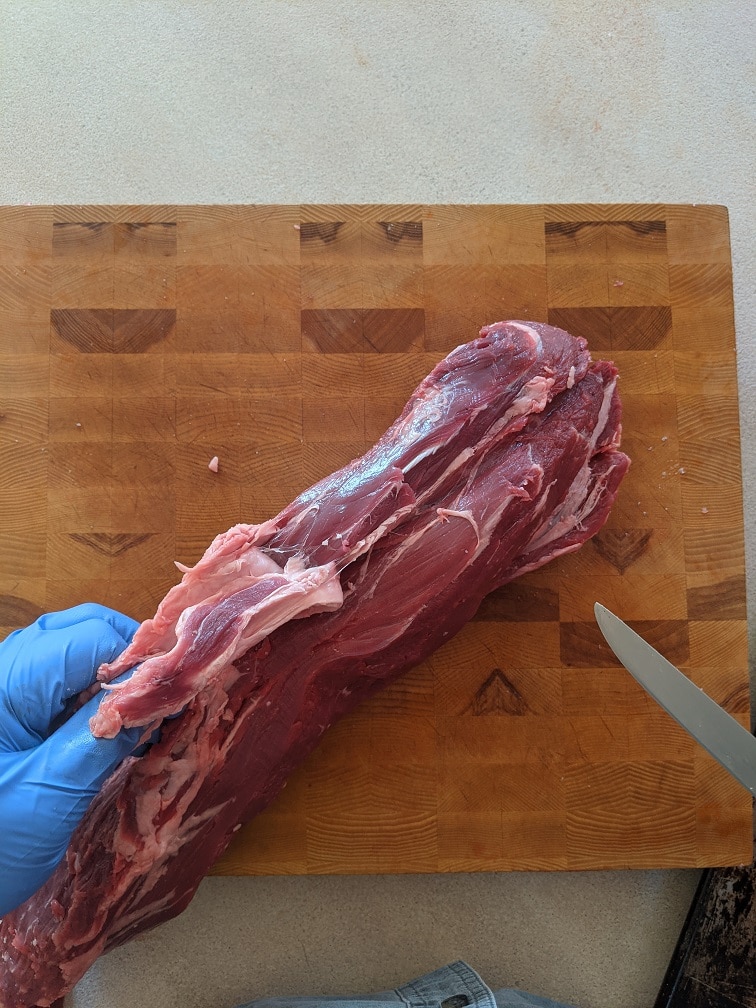
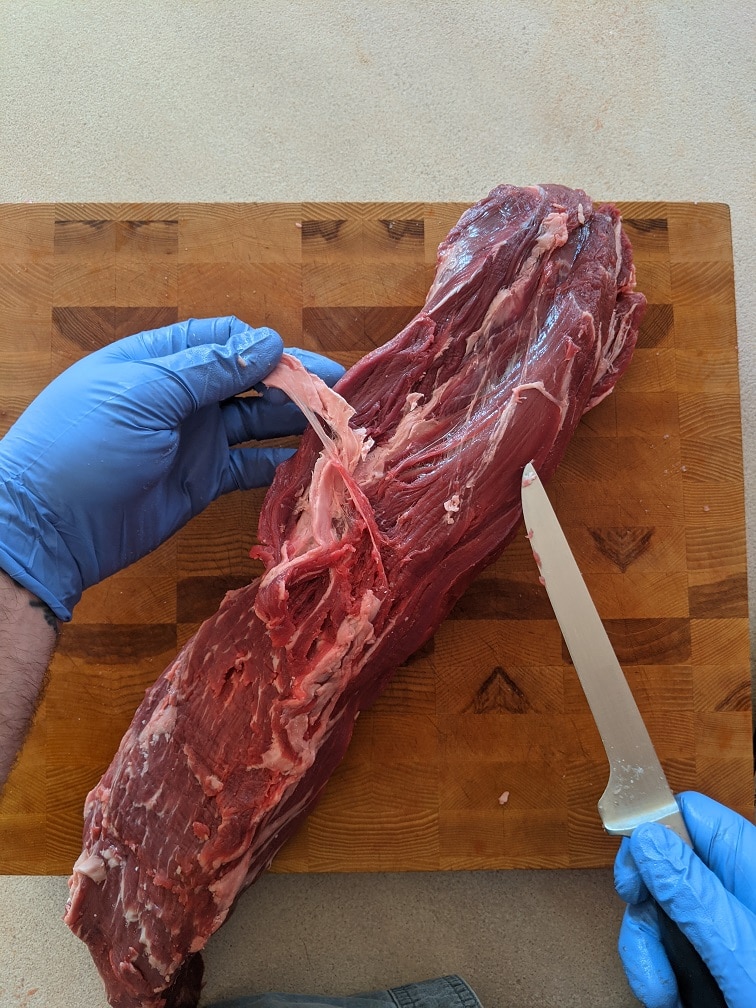
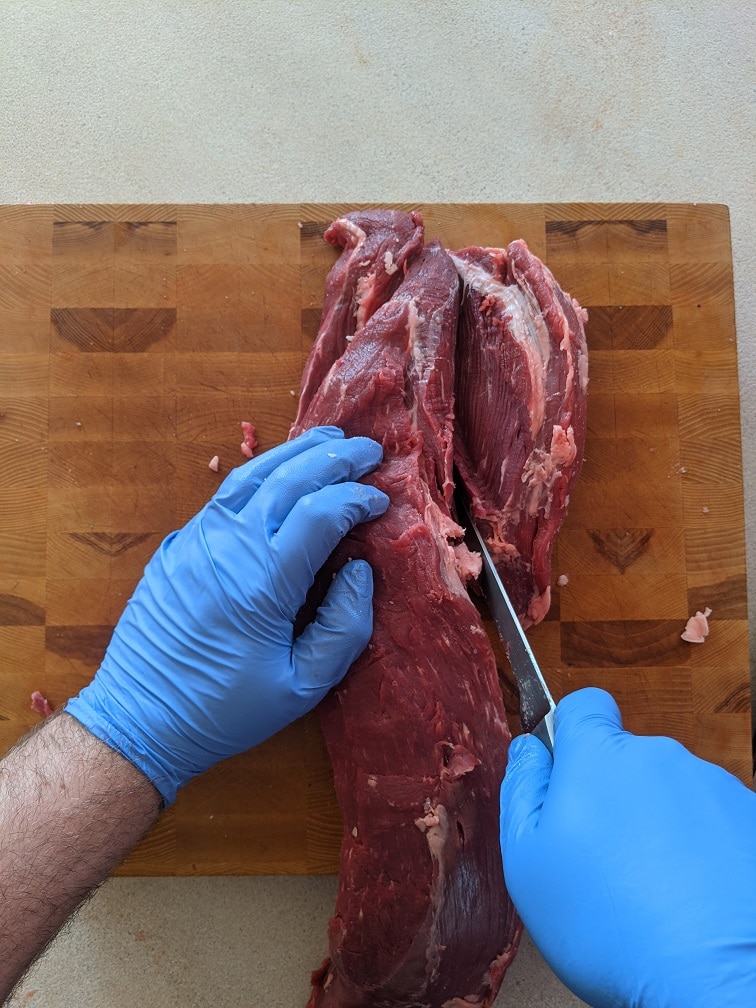
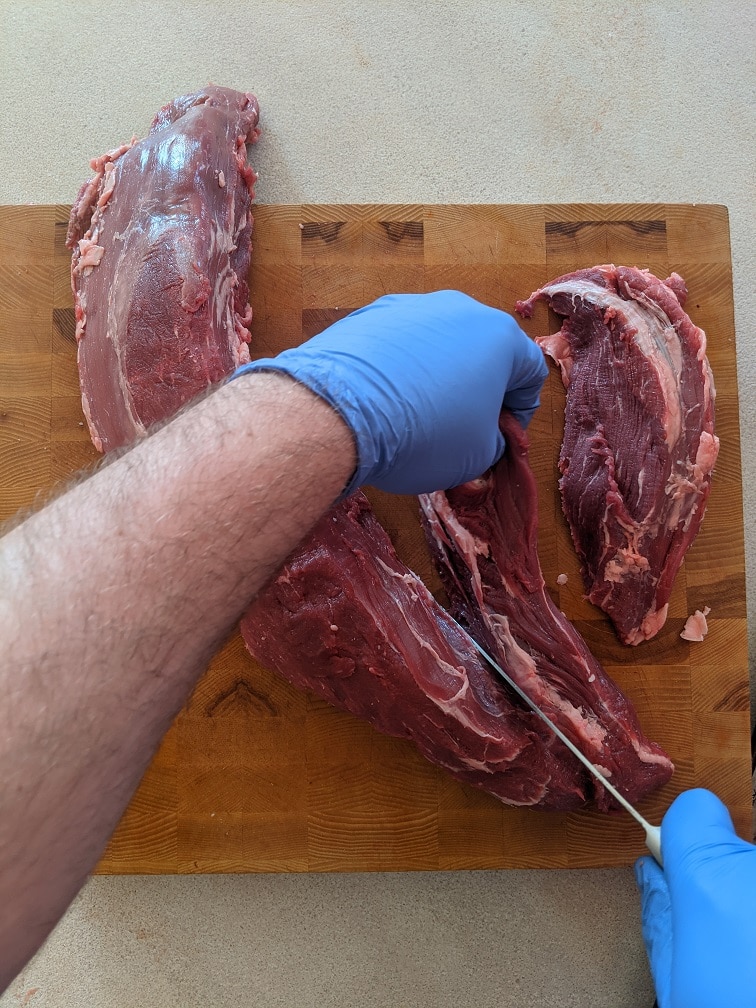
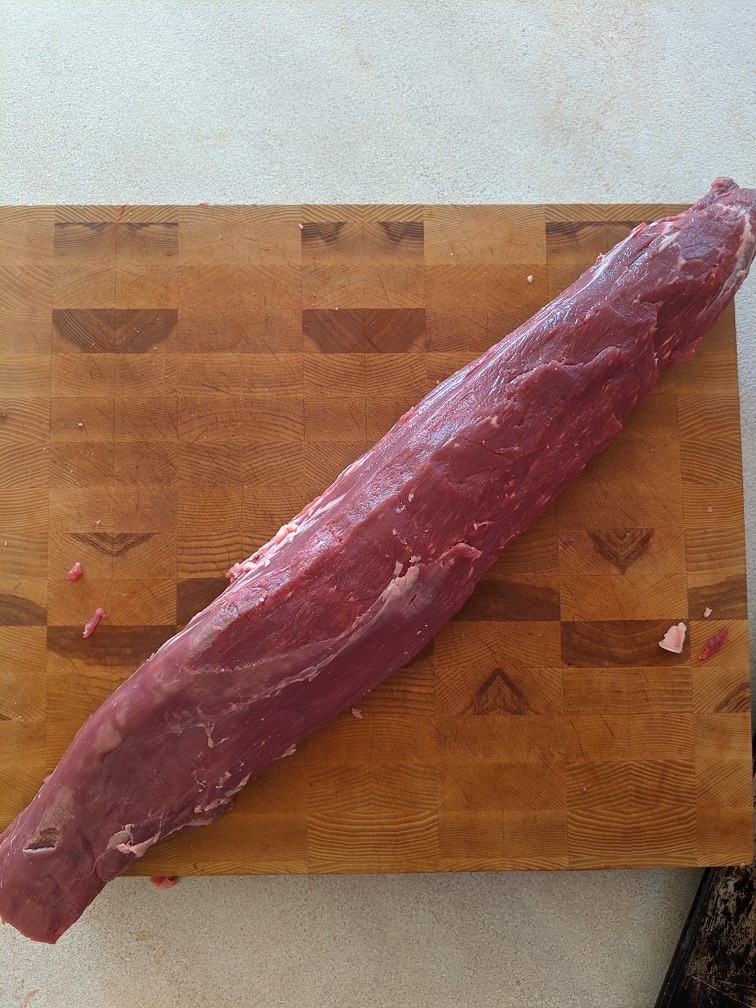
To Tie or Not To Tie
At this point, you can cut the tenderloin into steaks or tie it to be cooked whole. If you are cutting it into steaks, trim the tapered ends and add them to the scrap pile. This will help you get more equally sized steaks. If you are roasting the tenderloin whole, as I prefer to do, you are going to want to tie it. This isn’t strictly necessary, but it helps the tenderloin keep its shape when cooked and helps it cook more evenly. Use butcher’s twine to tie the tenderloin. Butcher’s twine is a 100% cotton string that you can buy in most grocery stores.
Tieing the Tenderloin
There are a few ways to tie the tenderloin. The first way is to cut 12 10-inch pieces of twine and tie each one evenly around the tenderloin. The second way and the one I prefer is to use butcher’s knots. Tie one end of the twine around one end of the tenderloin. Make a big loop with the twine and twist it twice. Thread the tenderloin through the loop and pull it tight. The loop will tighten around the tenderloin. Do the same thing again and space the second loop out from the first one by about an inch. Repeat until the whole tenderloin is tied, then cut the string and tie it off with any basic knot. This technique takes some practice, but once you get the hang of it, it becomes the easiest way to tie any roast.
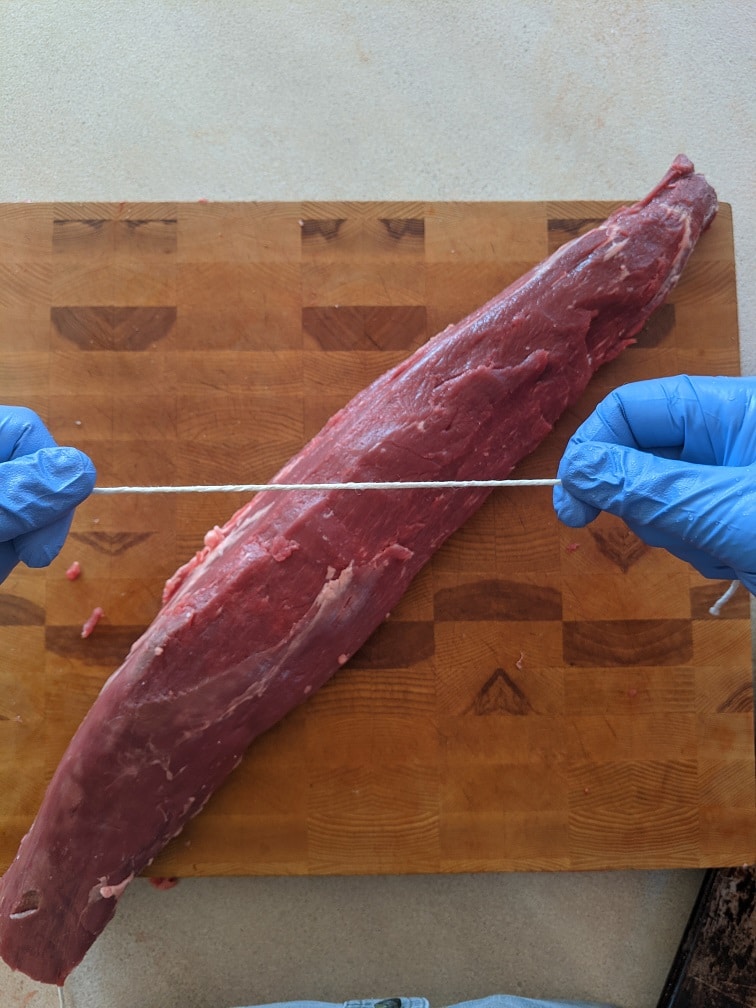
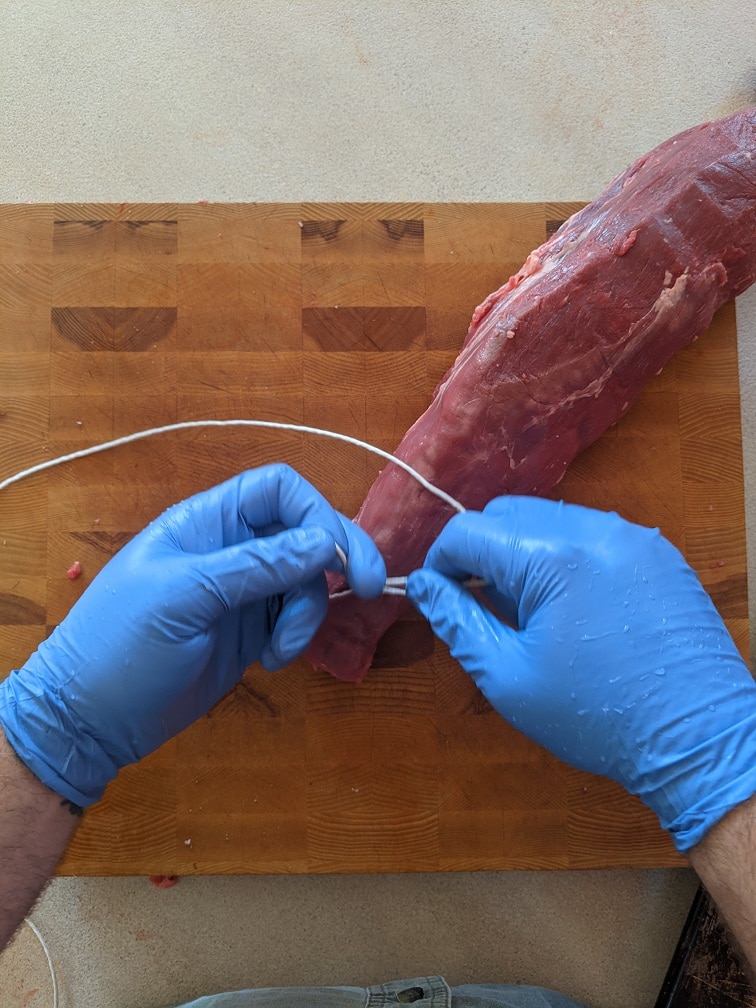
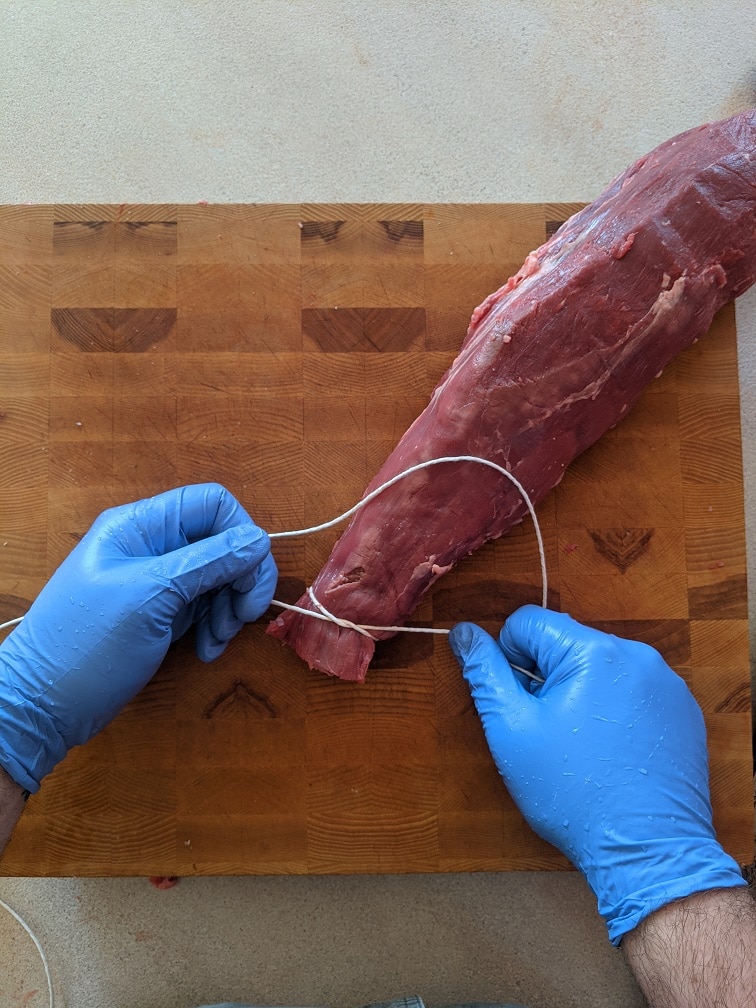
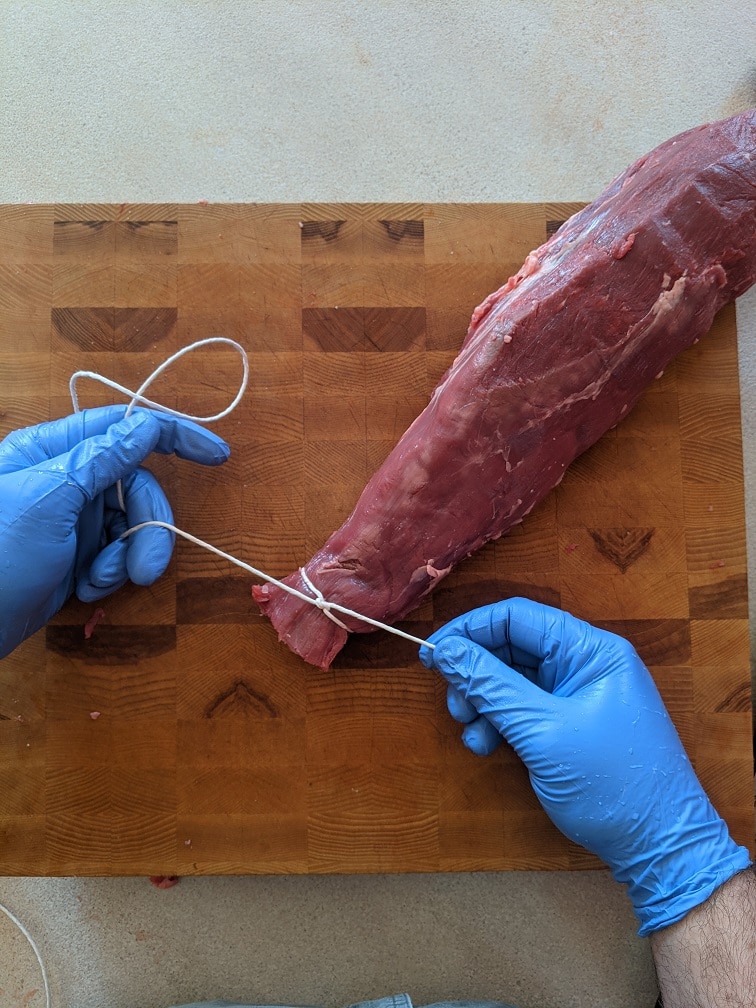
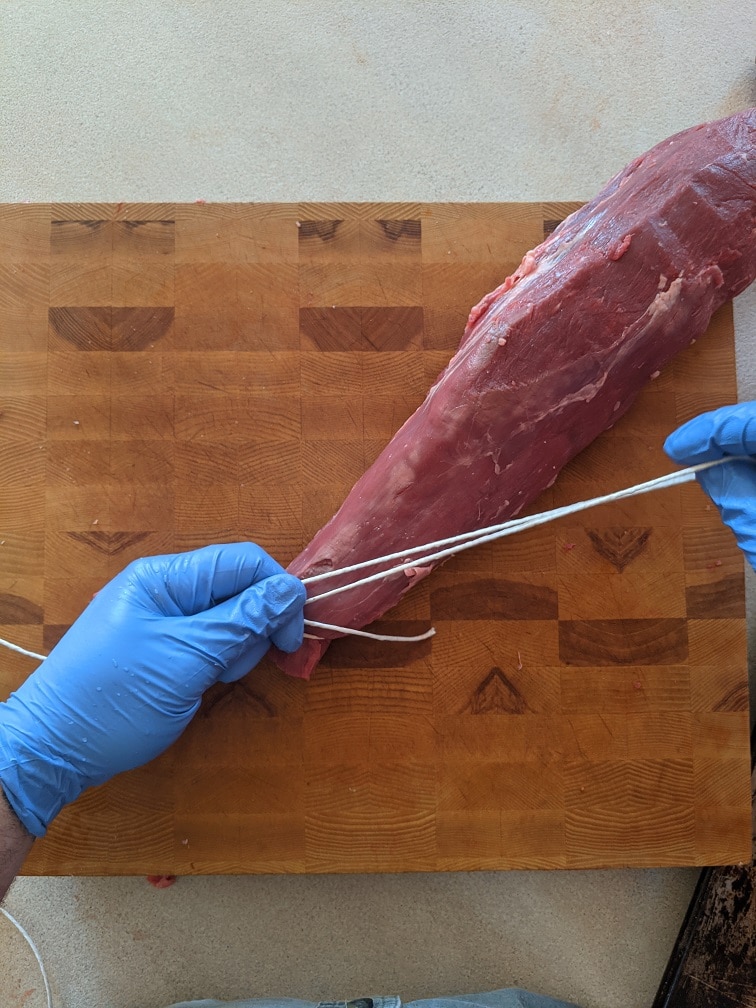
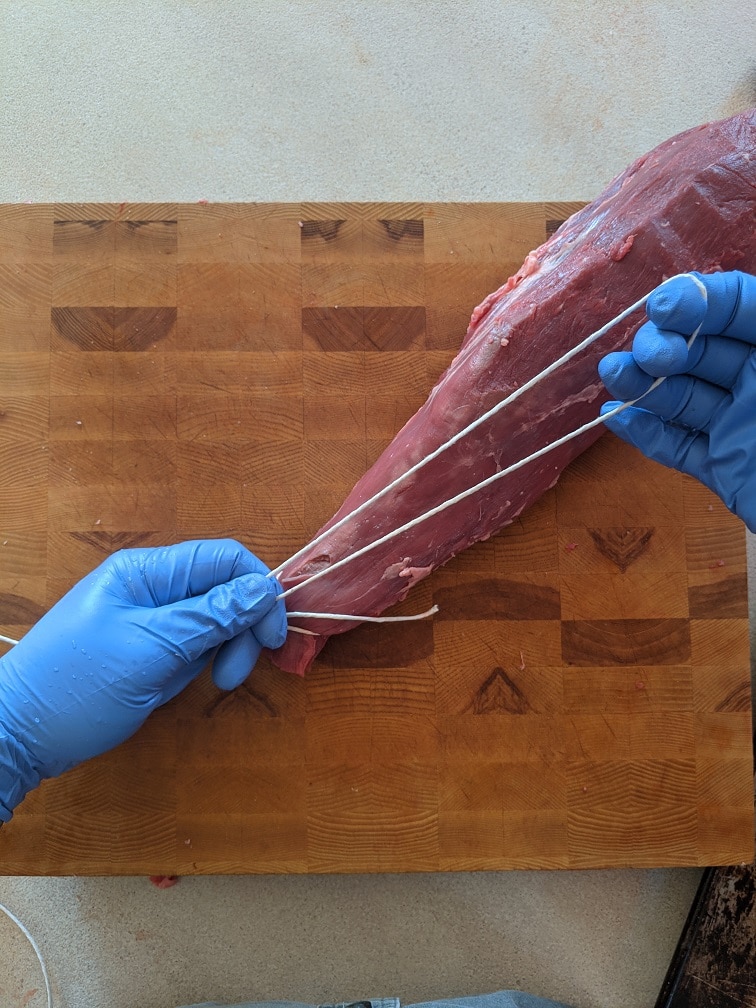
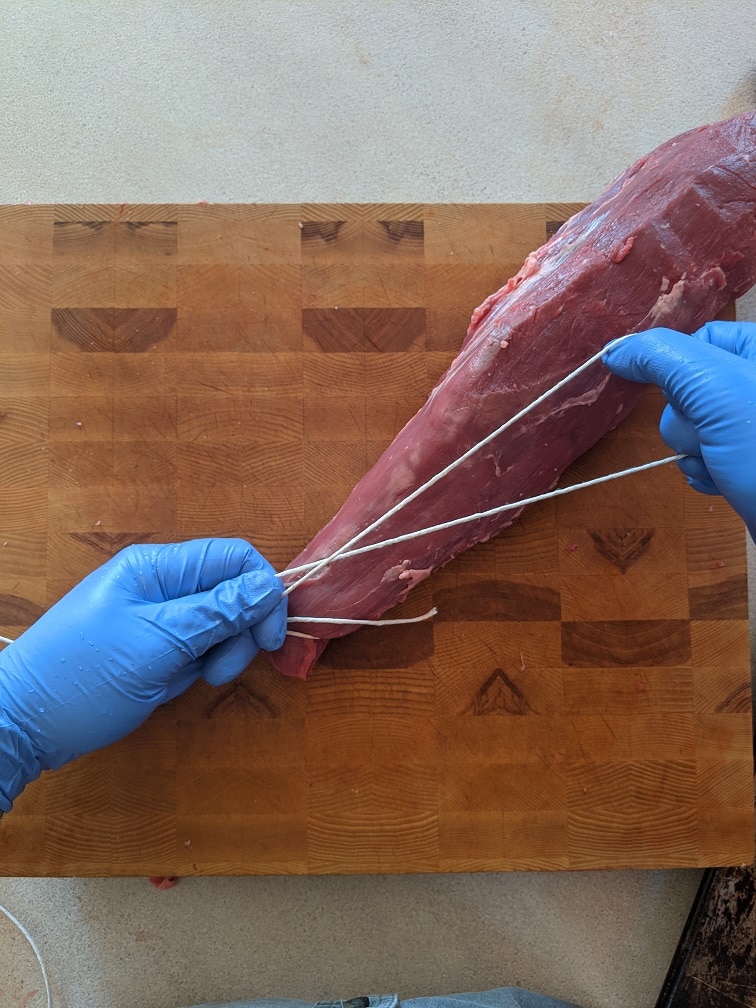
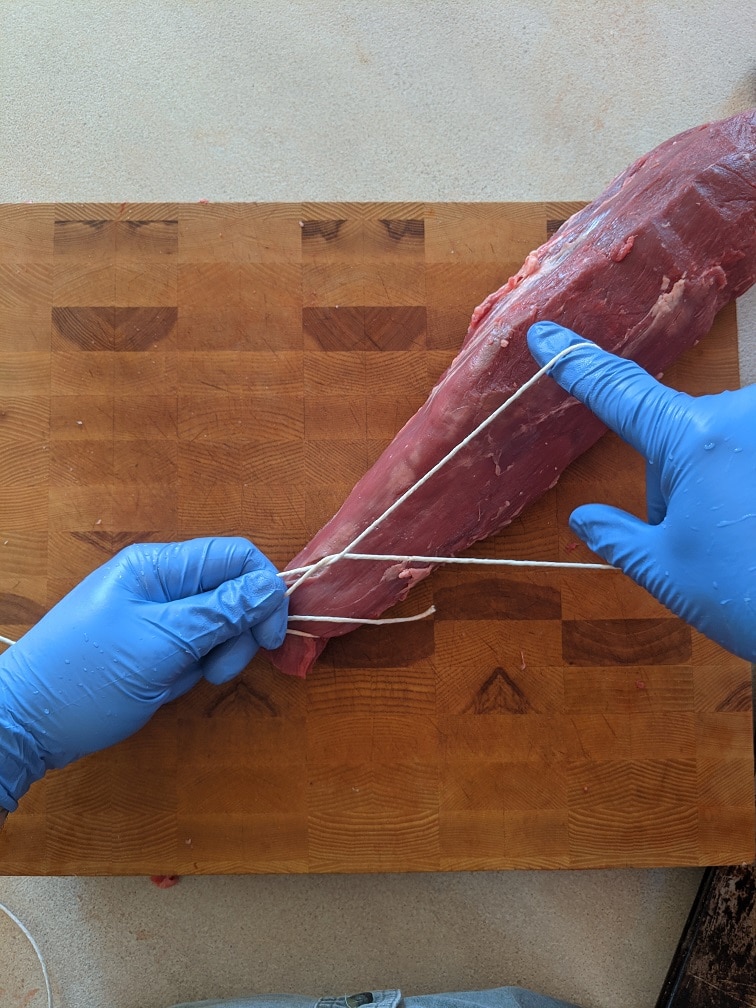
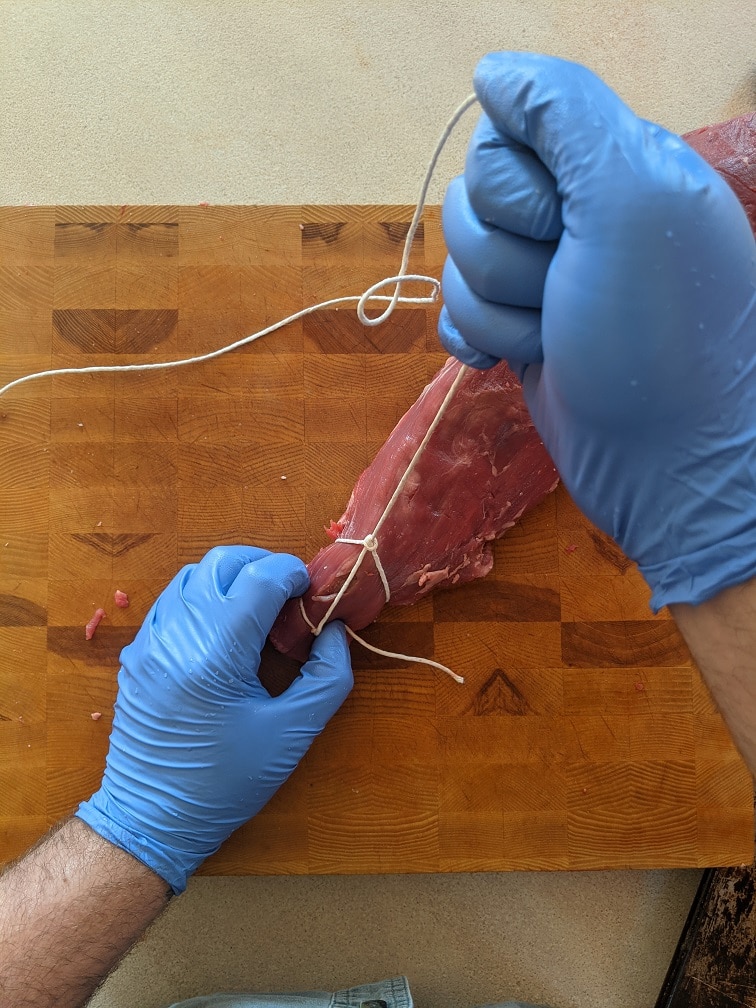
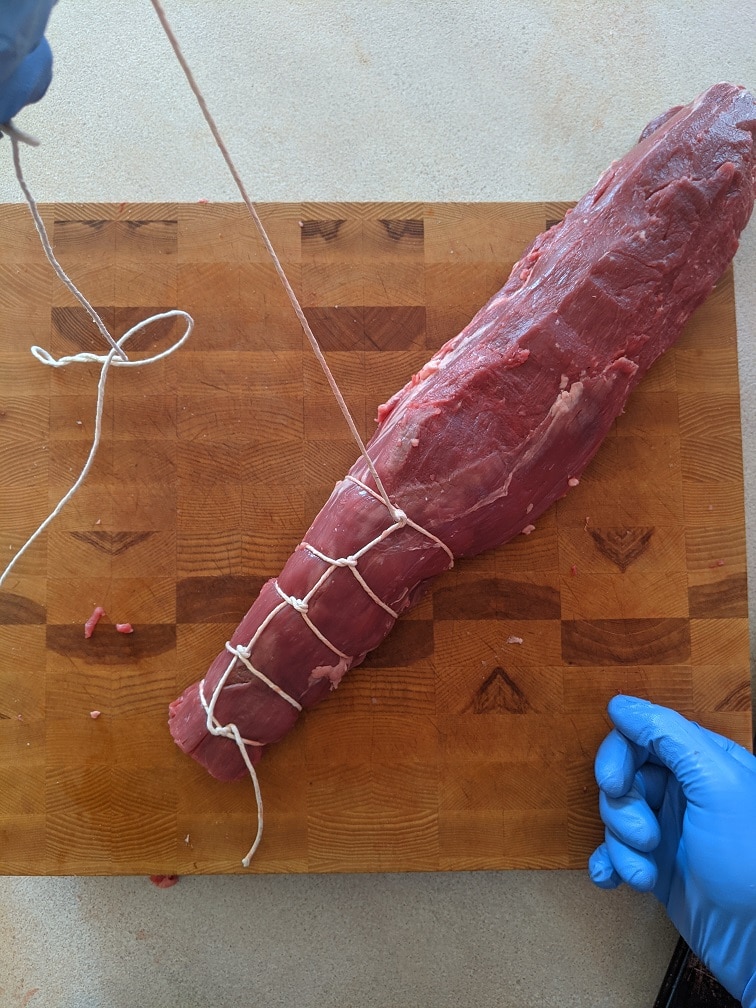
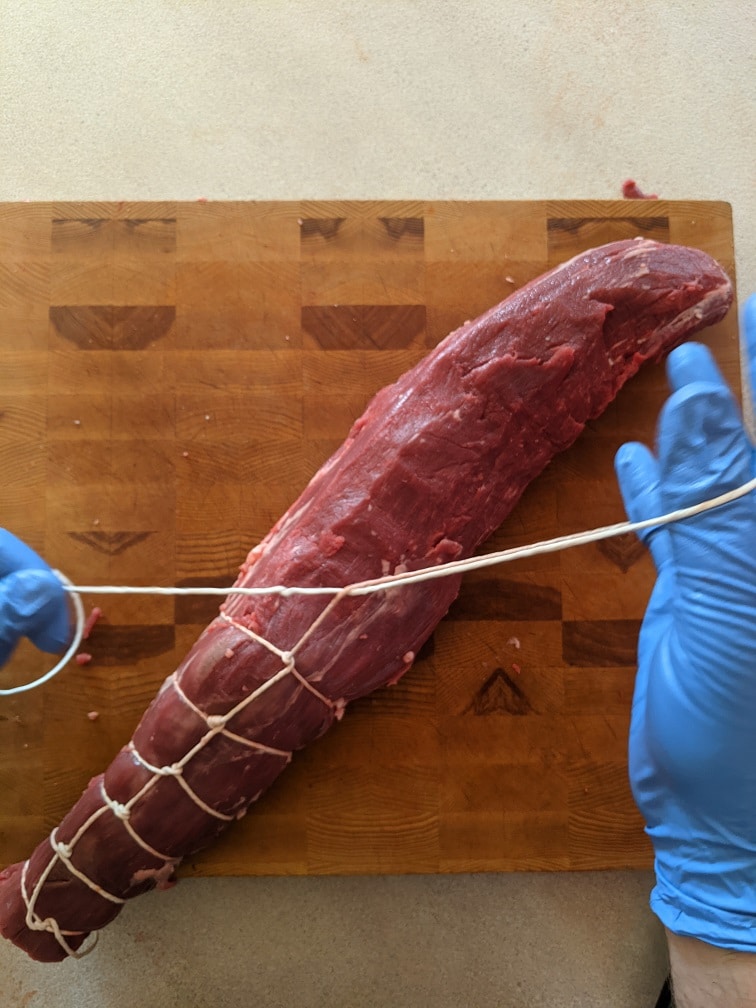
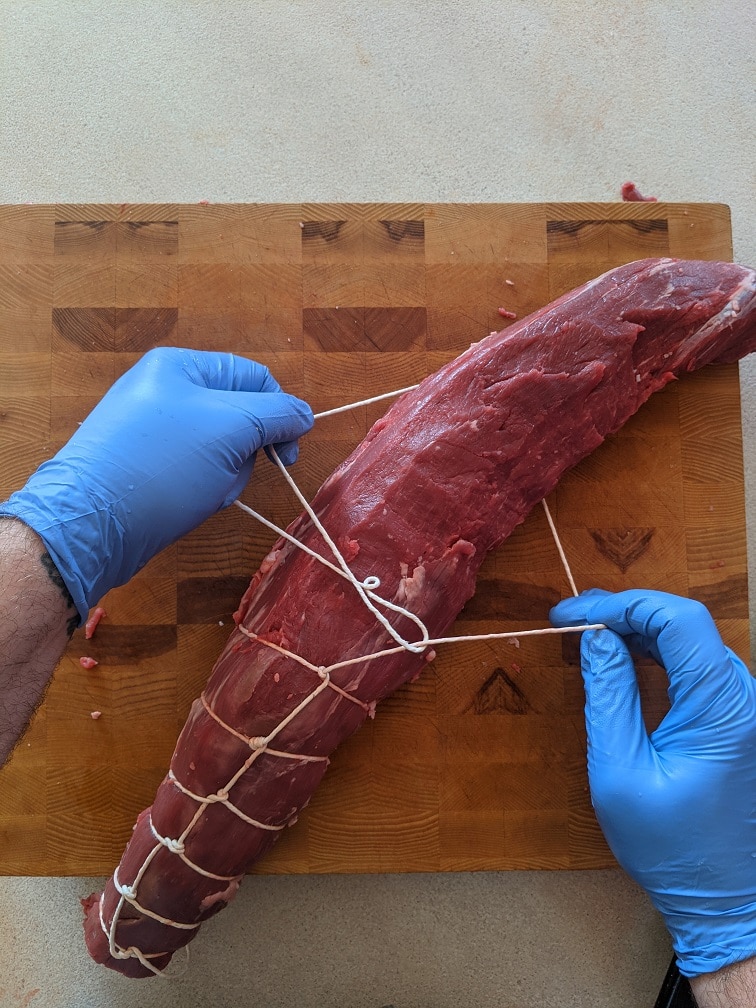
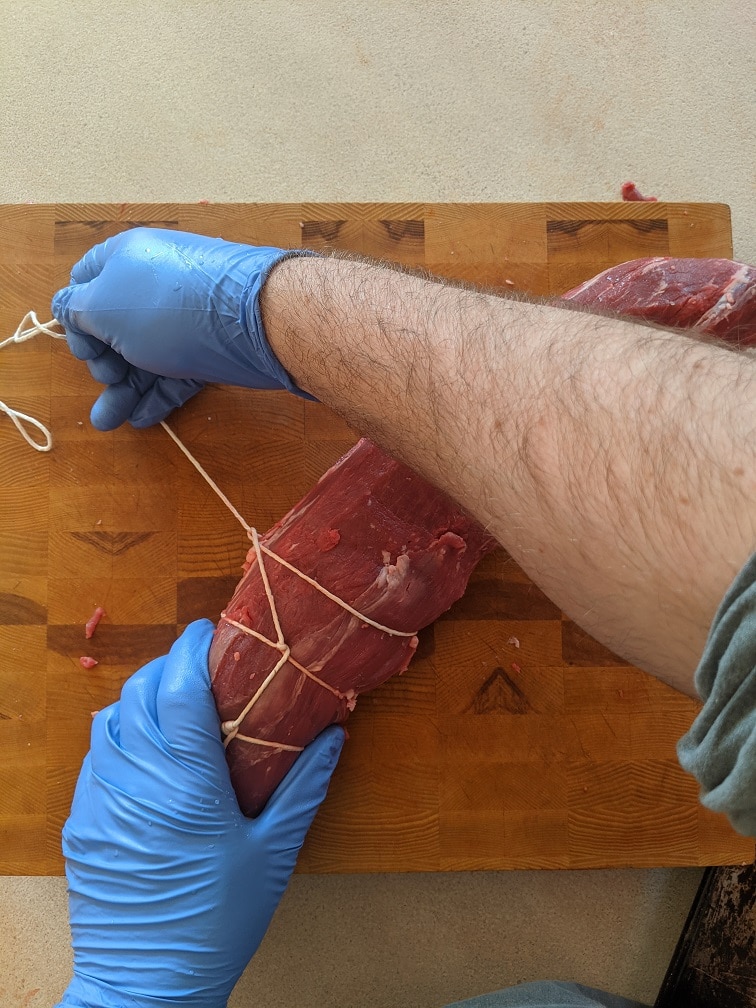
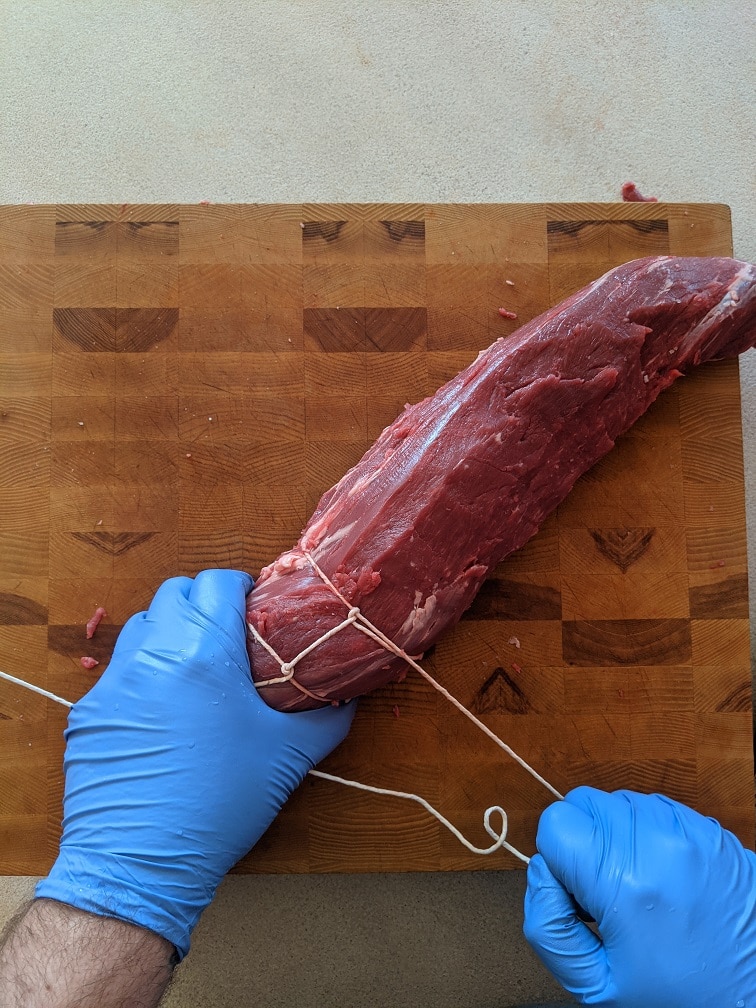
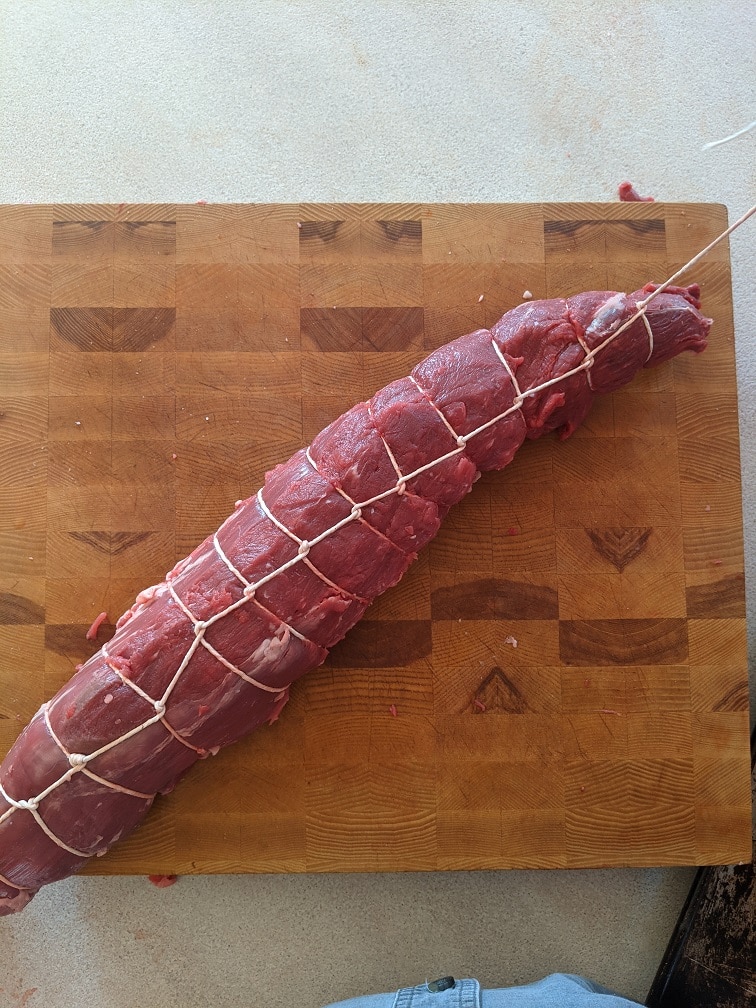
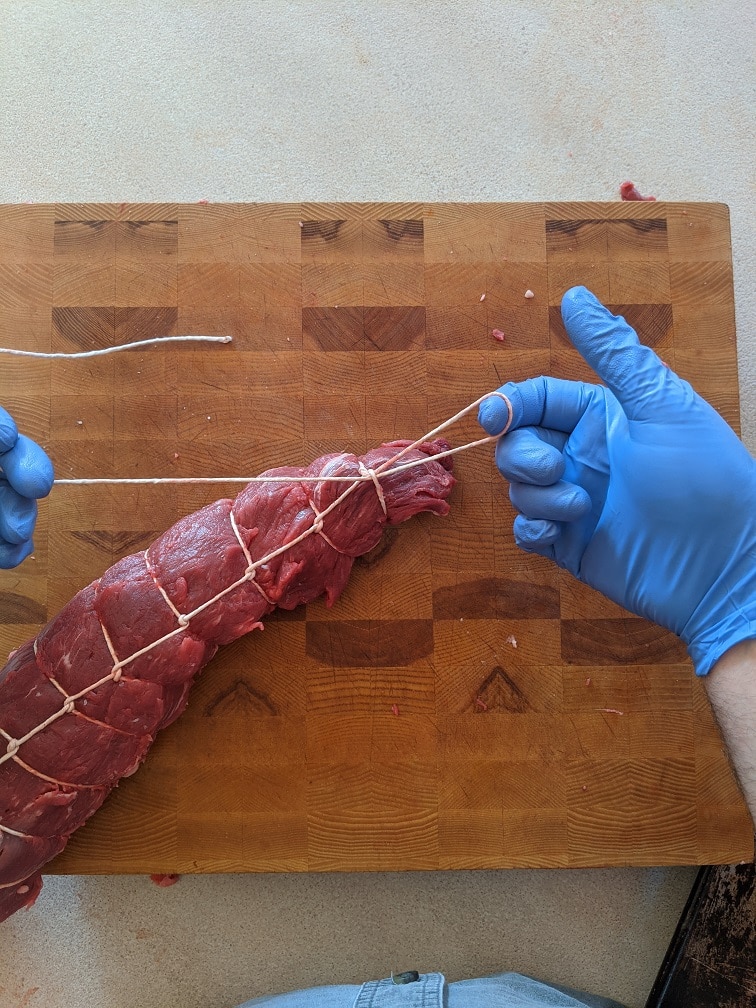
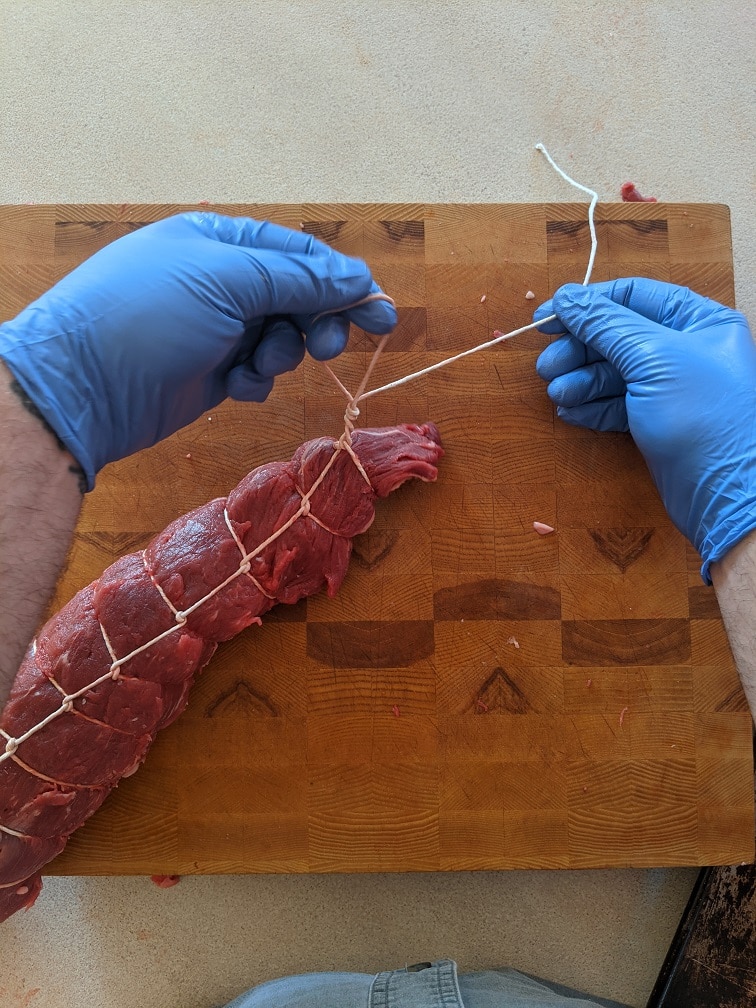
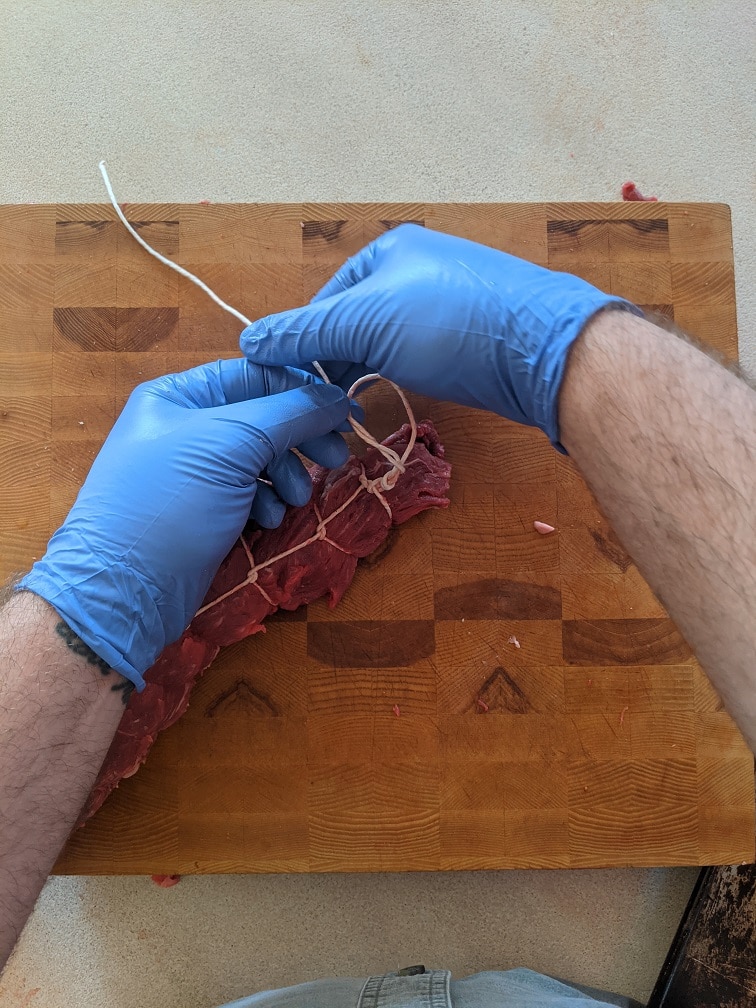
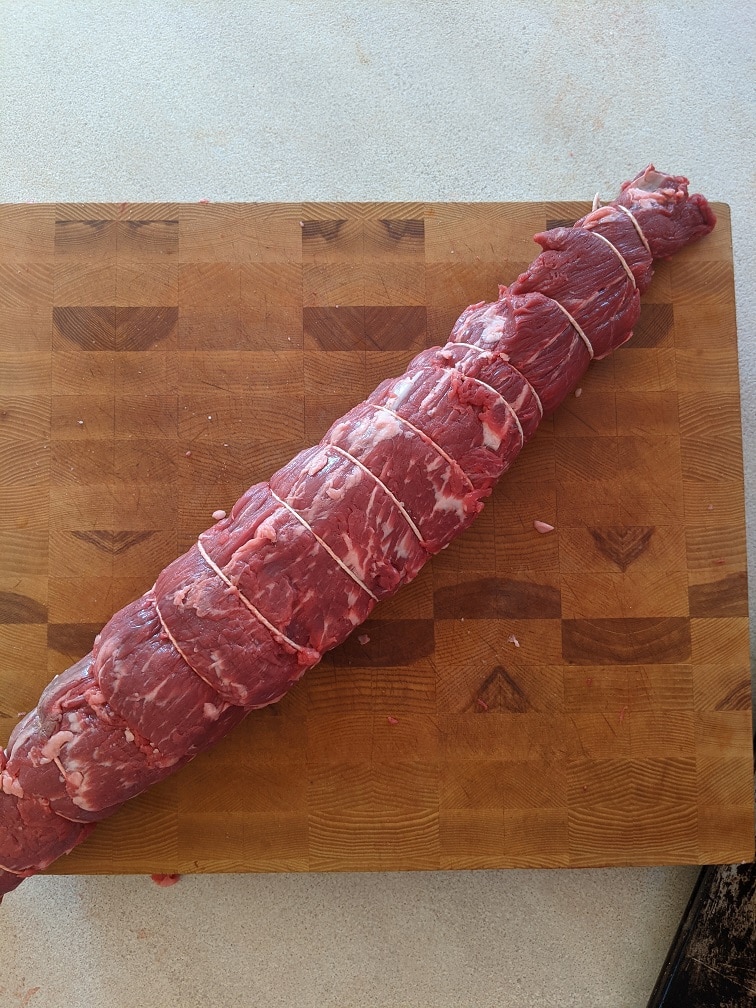
The Scraps
Waste not! The scraps from your tenderloin, including the chain and trimmed fat, are perfect for making stocks or other dishes like skewers, stir-fries, or stroganoff. Every part of the tenderloin can contribute to a delicious meal.
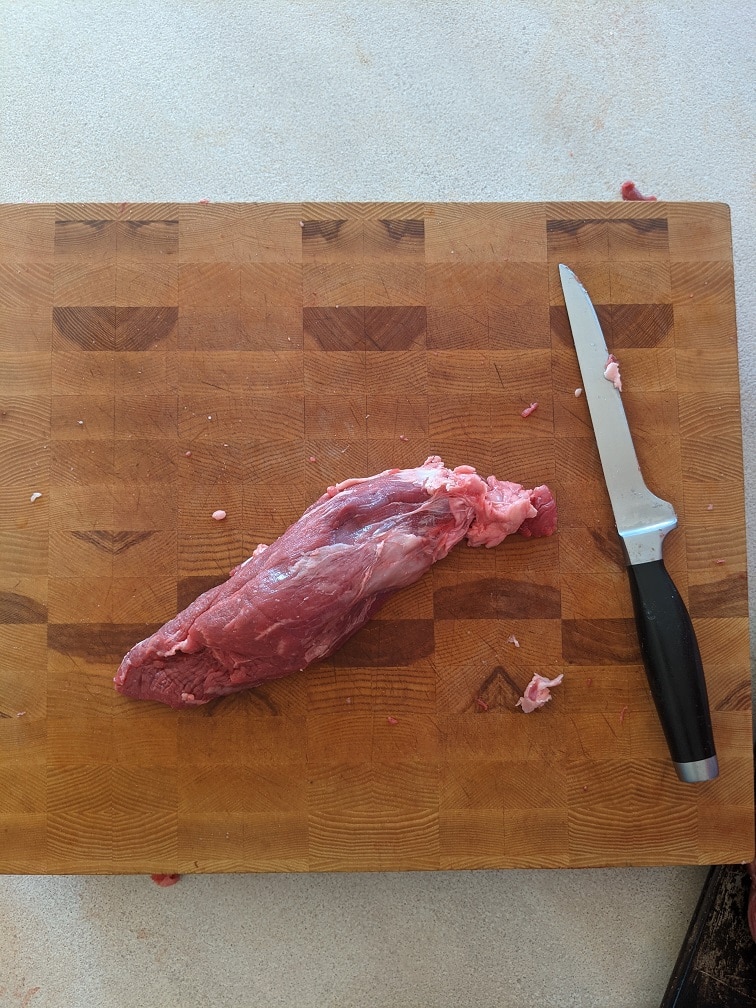
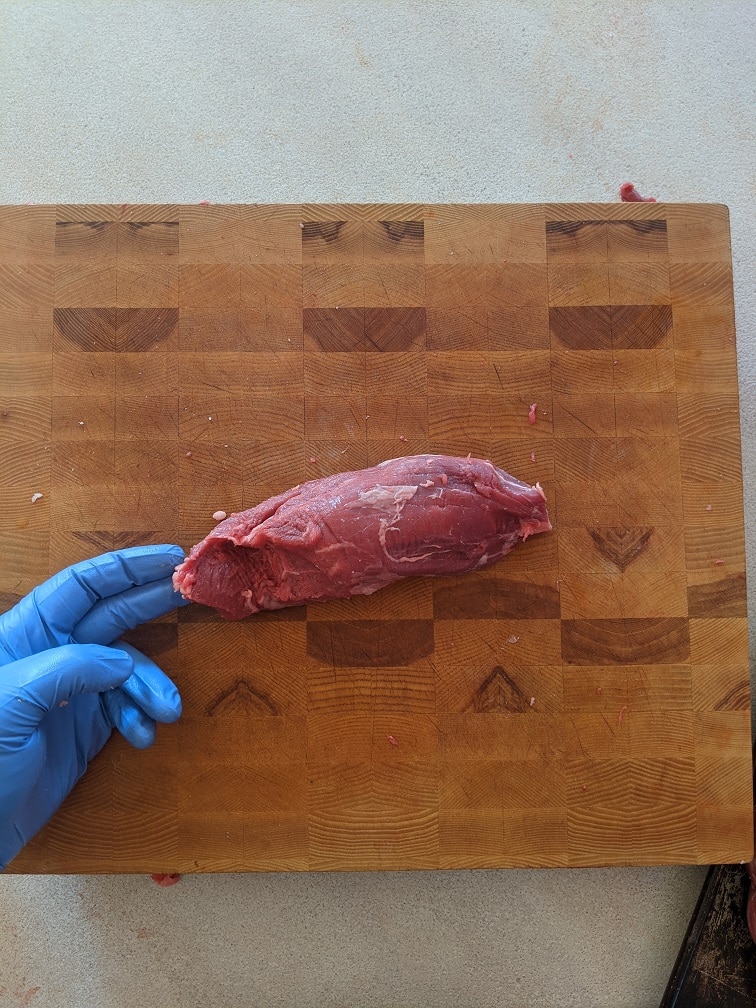
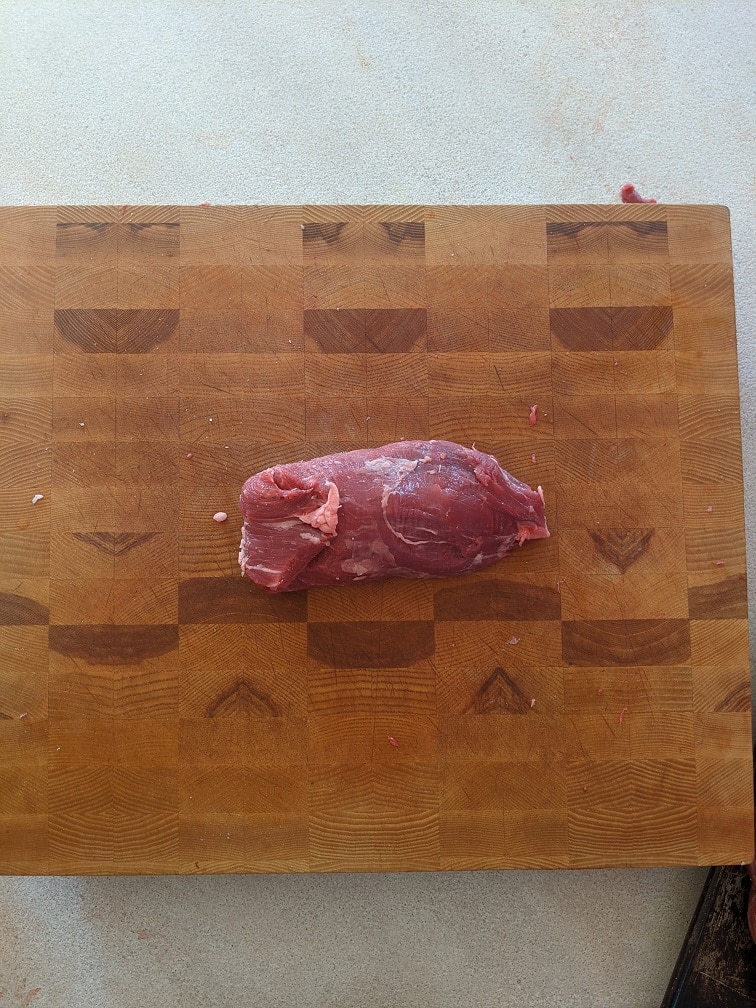
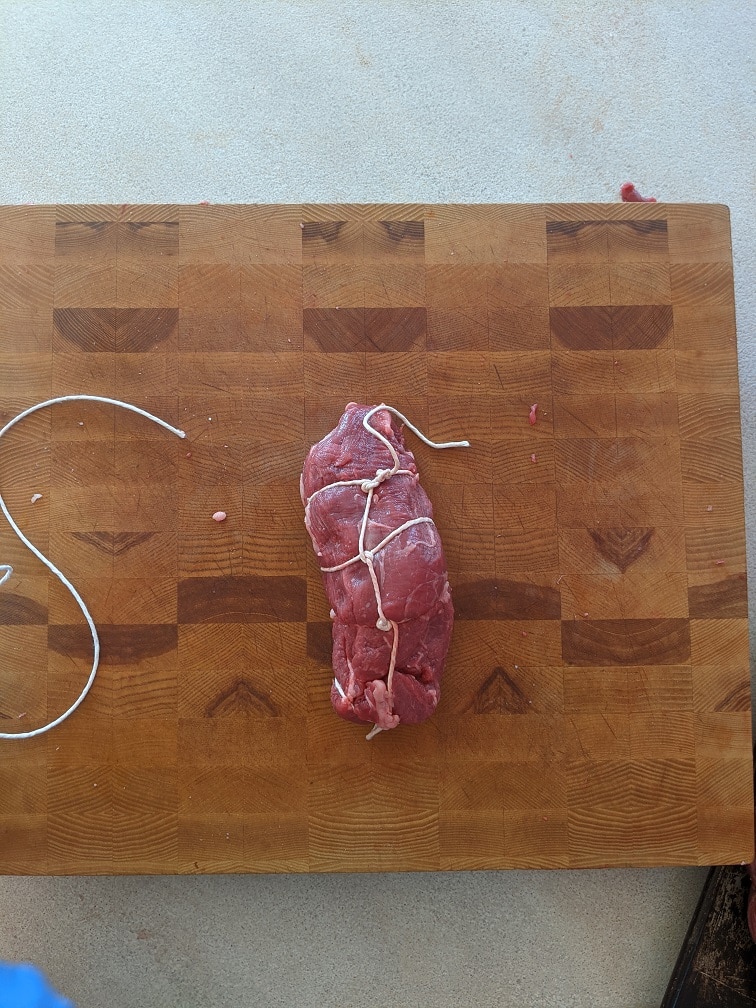
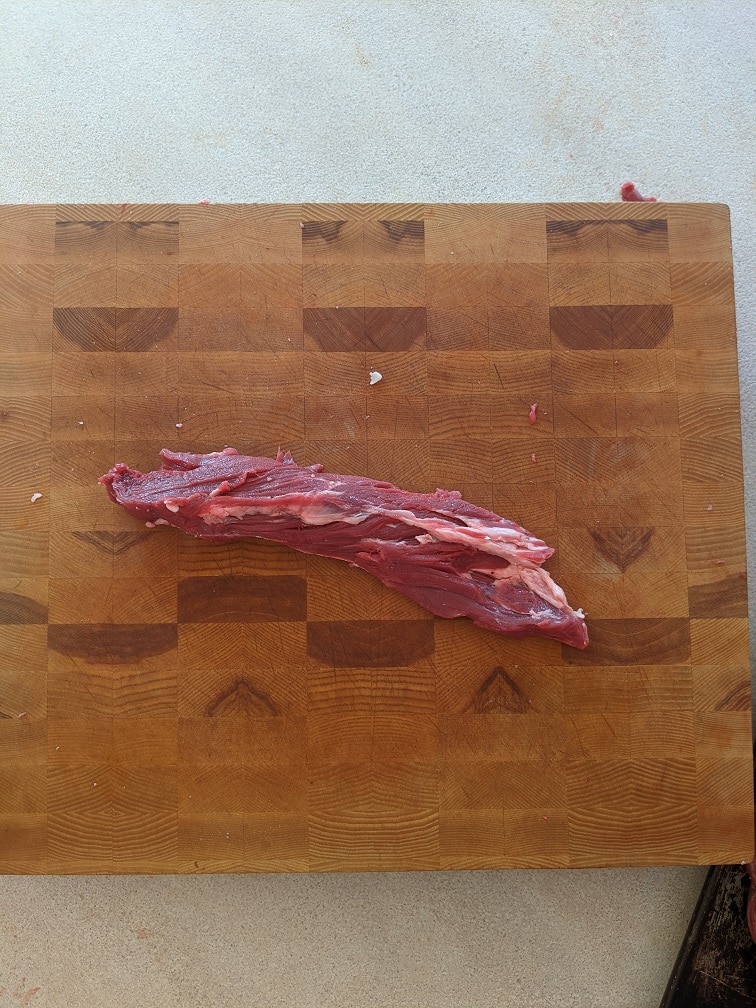
Cooking the Tenderloin
Though this post focuses on cleaning, a basic cooking method involves rubbing the tenderloin with a mix of herbs, olive oil, salt, and pepper. Roast in a preheated oven or on a barbecue, ensuring you achieve the perfect internal temperature for your desired doneness.
Storing Beef Tenderloin
If you plan to store the tenderloin, it can be frozen either cleaned or uncleaned without losing quality. For optimal results, consider using a vacuum sealer or the original packaging.
Conclusion
Understanding how to properly clean and prepare a beef tenderloin can transform your culinary experience. Not only does it make for a more enjoyable meal, but it’s also cost-effective, allowing you to feed more people with a single purchase. Share this guide with fellow cooking enthusiasts, and don’t forget to subscribe for more tips and tricks. Happy cooking!

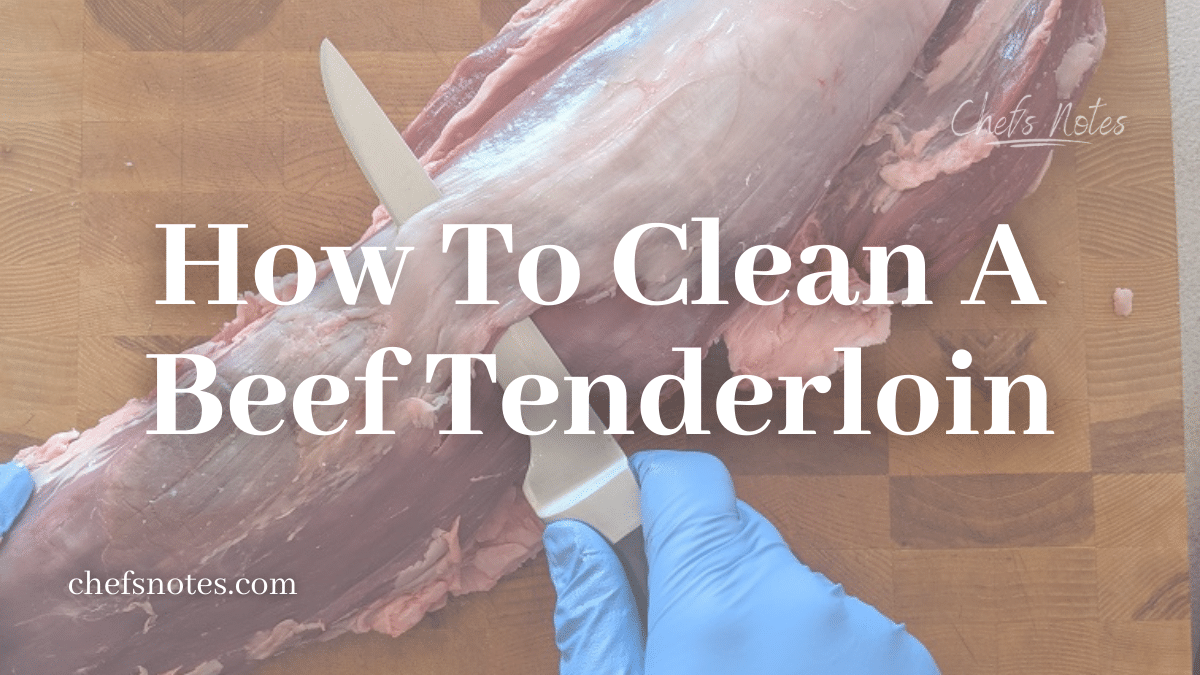
Thank you
It is truly my pleasure